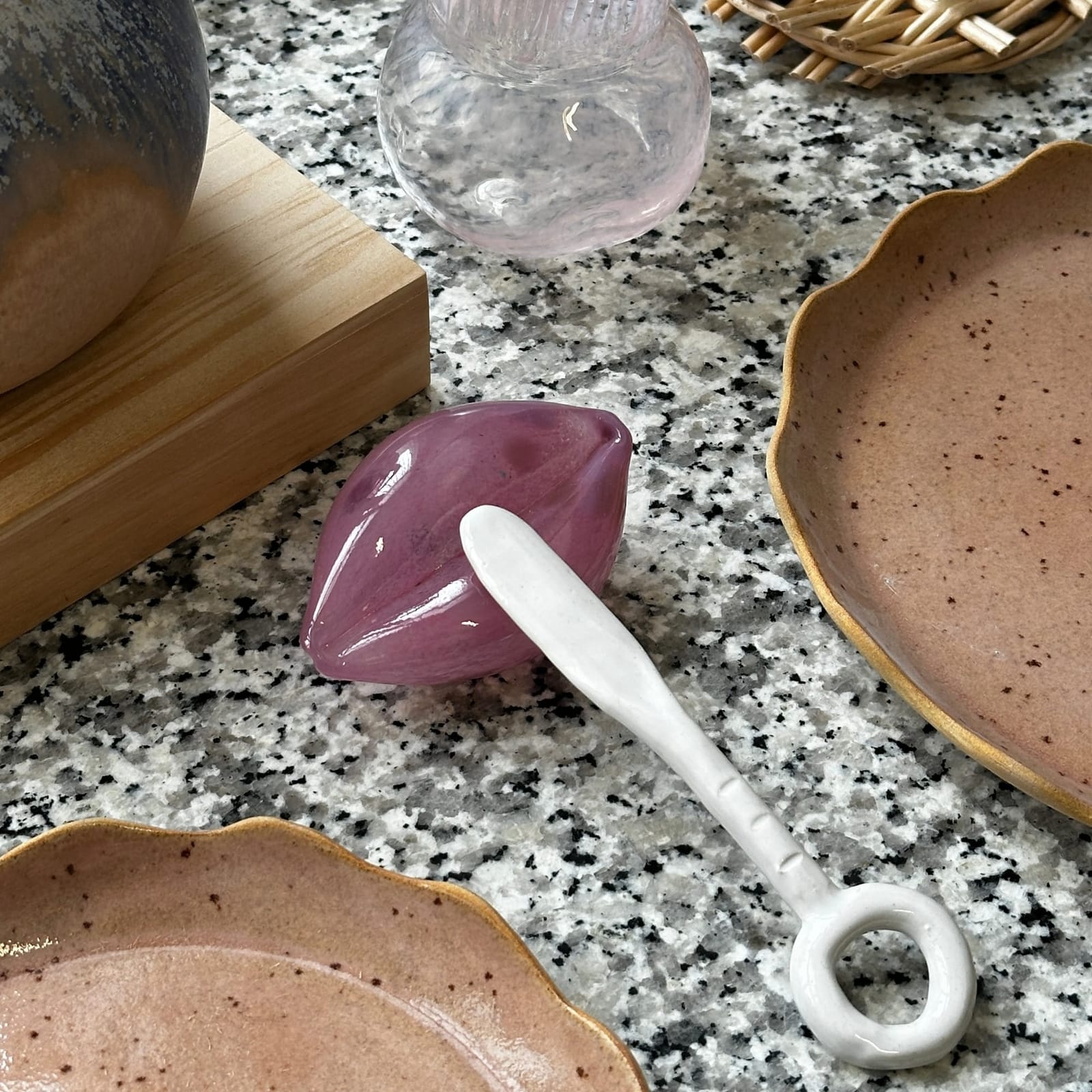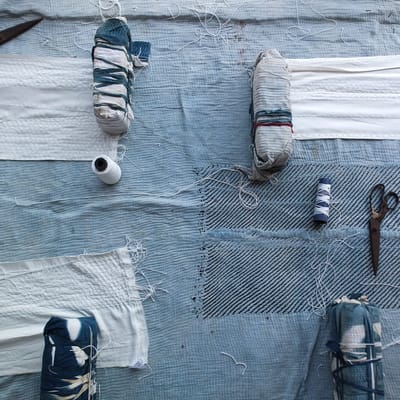An essential event on any designer's calendar, Milan Design Week was held April 7th-13th, 2025. Comprising several design districts — and a dedicated trade show at a fairground northwest of the city — there was much to see at this year's Salone di Milano.
Trend forecaster and contributor Fiona Coleman shares her craft and sustainability-focused round-up with THE KINDCRAFT, focusing on several projects she thought were quiet stand-outs among the luxury brand presentations.
Roots
The ROOTS Exhibition, part of 'Masterly: The Dutch at Milan Design Week', was held at Palazzo Giureconsulti. Curated by Simone van Es, the exhibition emphasized environmental issues and celebrated the intrinsic beauty of the earth. Artists and designers explored bio-based materials – utilizing waste materials like horse manure, algae, mushrooms, and more – to develop circular solutions.
"This year, our presentation 'The Last Supper, From a Different Perspective’ again brings together an extraordinary group of Dutch artists, designers, and companies who are collectively shaping the future of art and design." writes Simone van Es. "Inspired by Leonardo da Vinci’s original fresco, we highlight the urgent necessity of ecological responsibility."
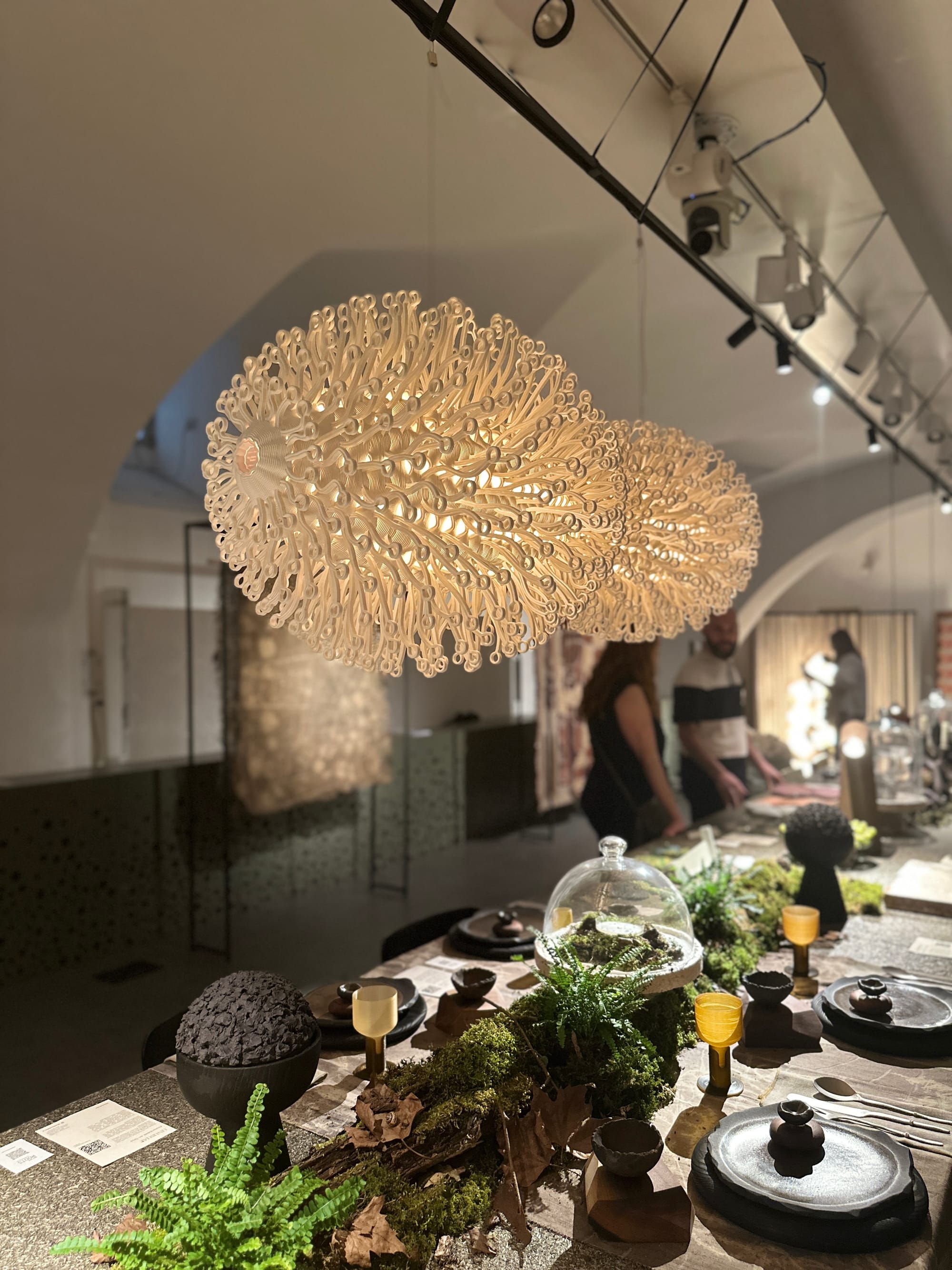
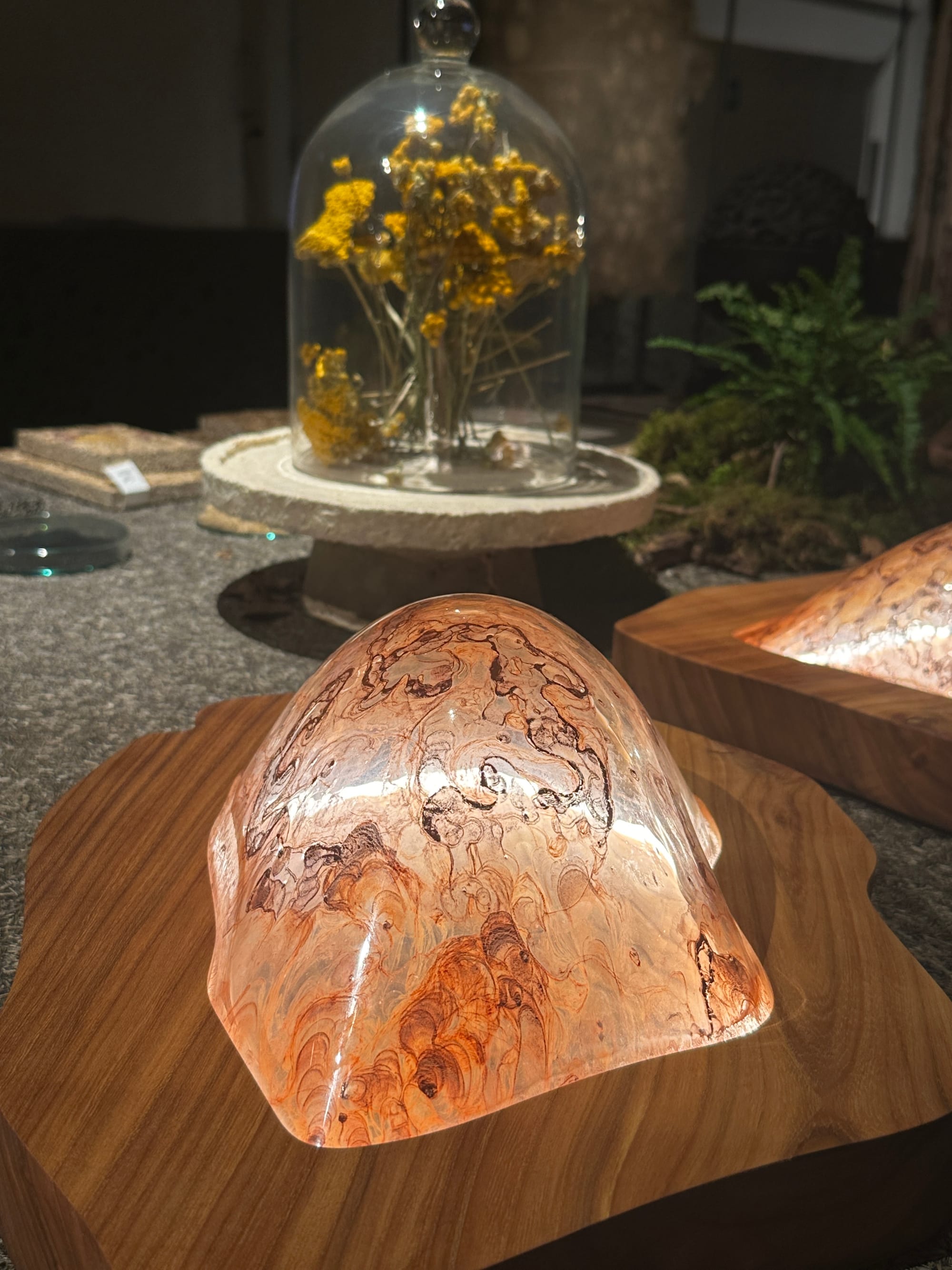
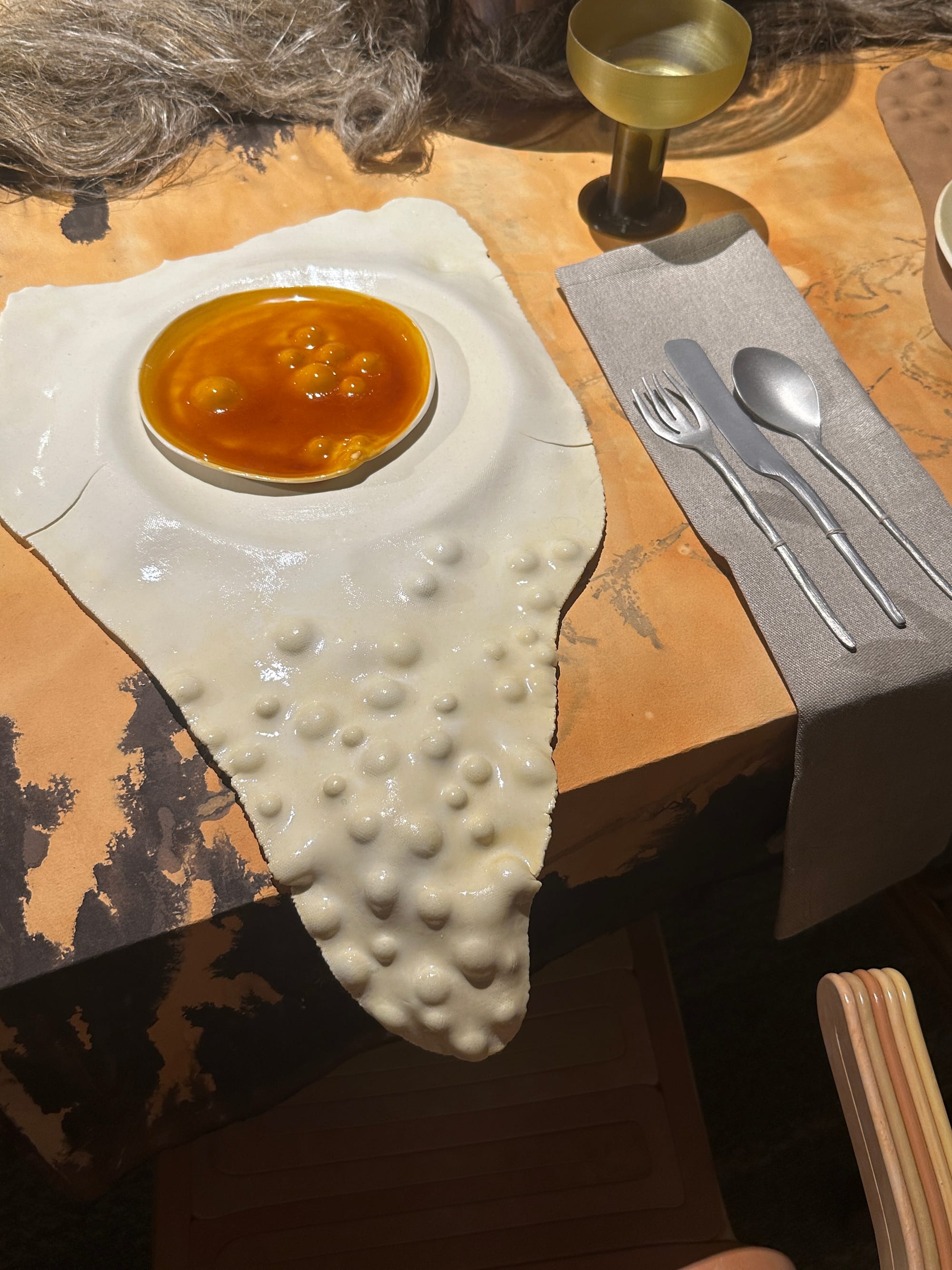
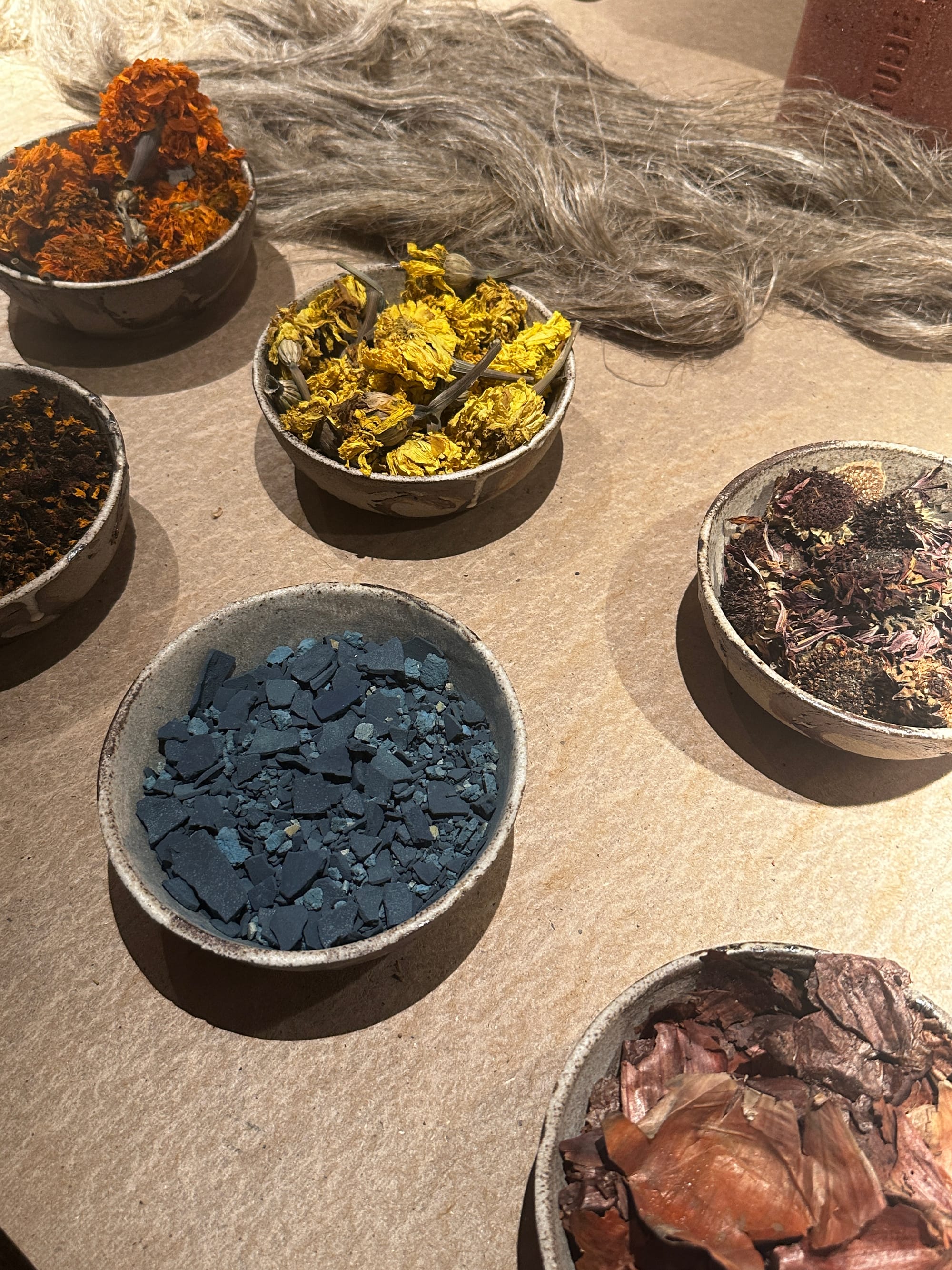
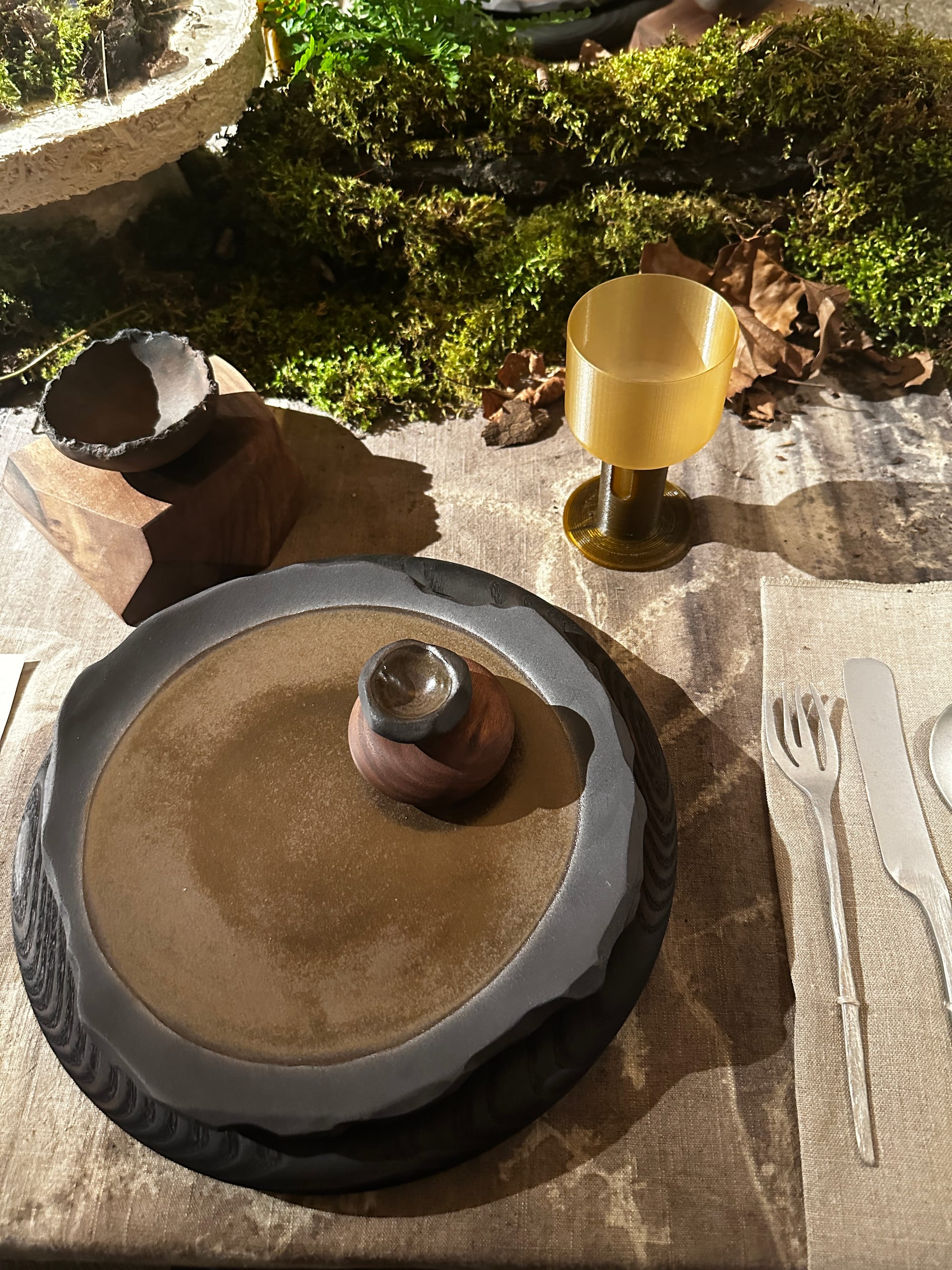
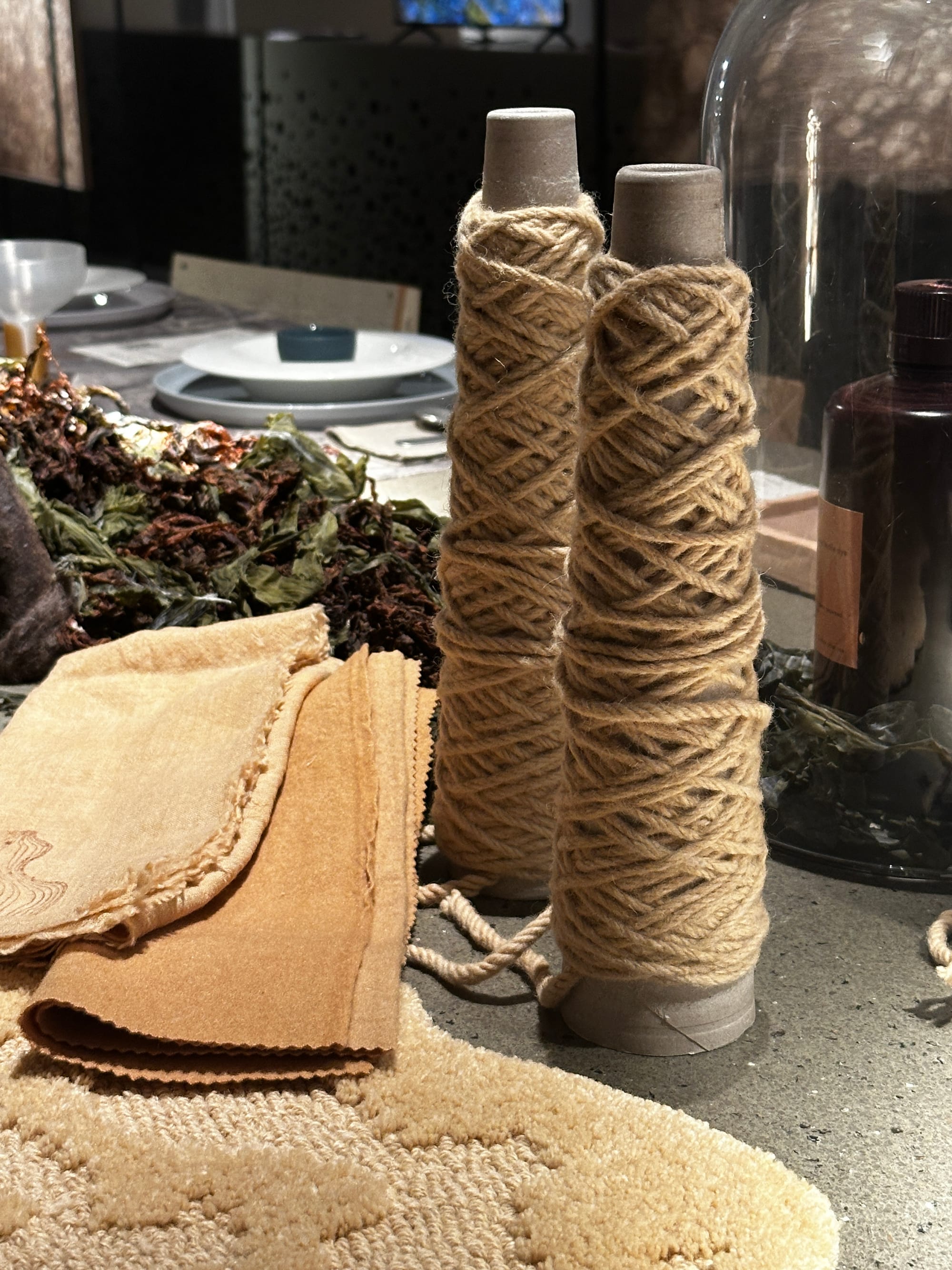
Photos by Fiona Coleman
Studio LoopLoop
As part of Alcova at Villa Bagatti Valsecchi, Studio LoopLoop invited visitors to explore their pop-up bathroom created with plant-based color anodizing. Founded in 2022 by Odin Visser and Charles Gateau, Studio LoopLoop is a design studio dedicated to sustainable production techniques. Their efforts have led to para-industrial systems in their Rotterdam workshop where they create sustainable materials.
The studio transformed the foresteria bathroom into a live anodizing workshop, immersing guests in natural color experimentation. Central to the installation is Little Dipper, a machine that dyes aluminium tiles in real time, creating fluid gradients directly in the bathtub. Nearby, a micro lab showcases LoopLoop's explorations with plant-based dyes highlighting unique sustainable coloration processes. As the week progressed, anodized tiles, lamps, and vases filled the space, creating a vibrant canvas of botanical hues. This immersive experience demonstrated the potential of natural pigments on aluminum – challenging craft, technology, and design limits from a local production perspective.
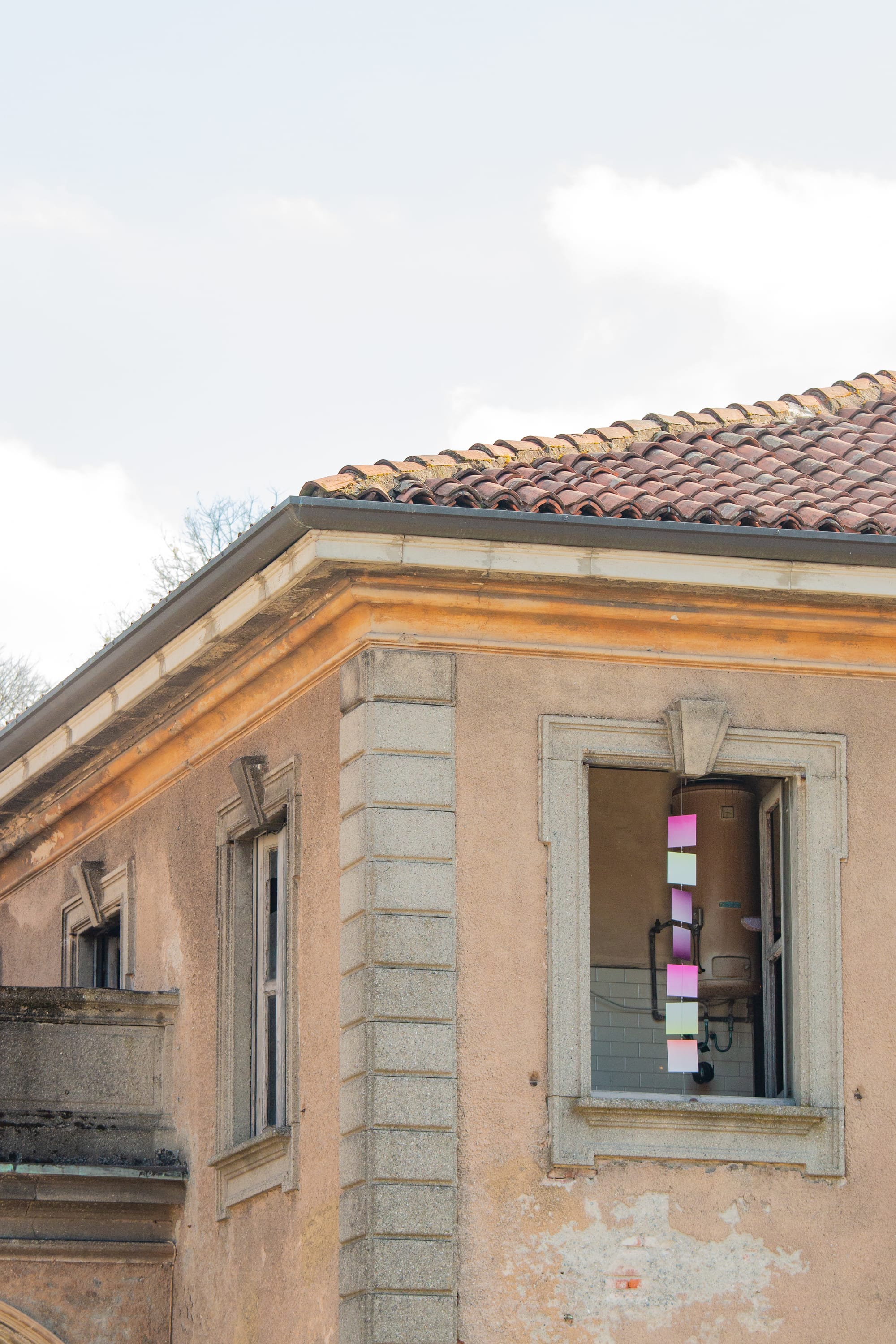
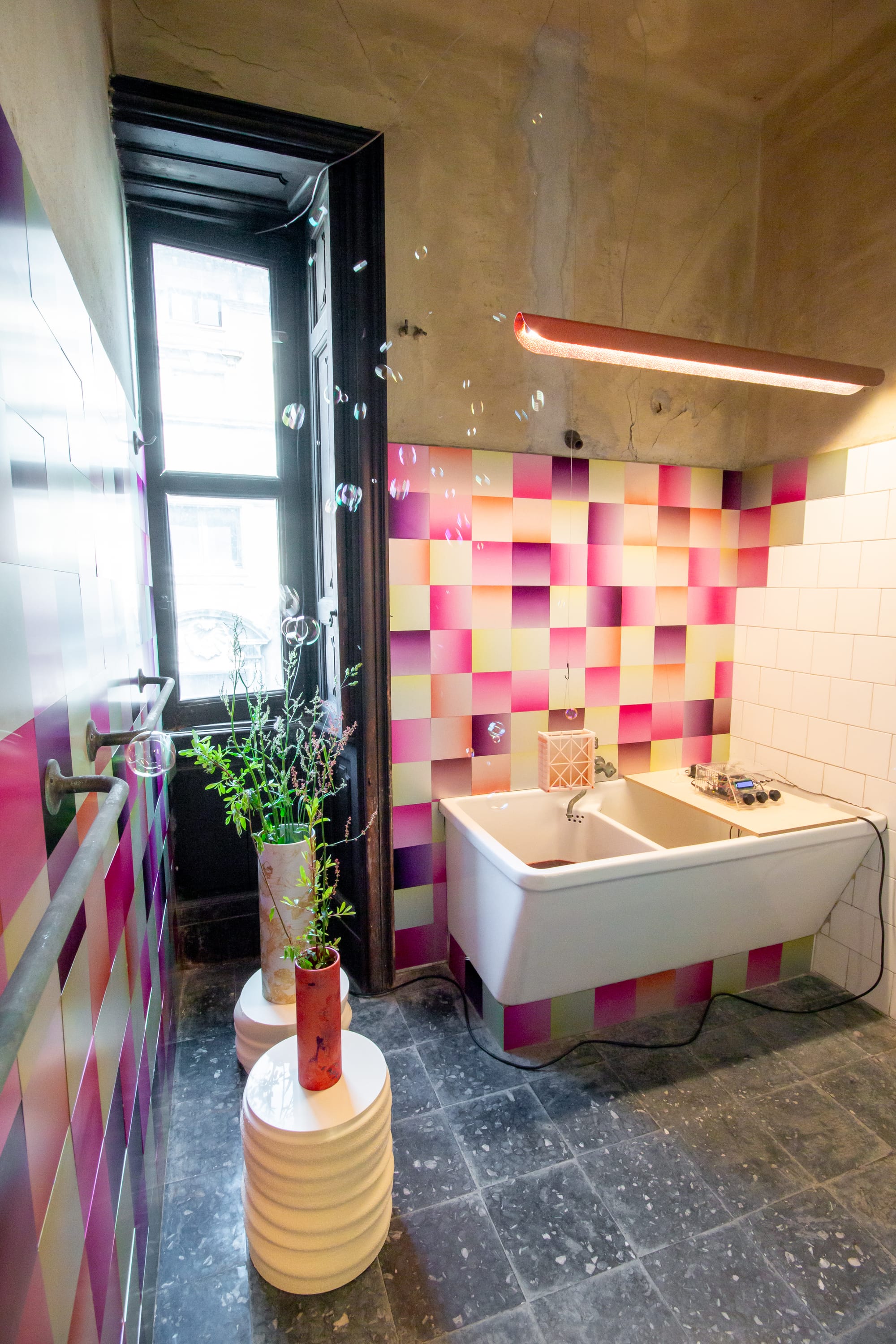
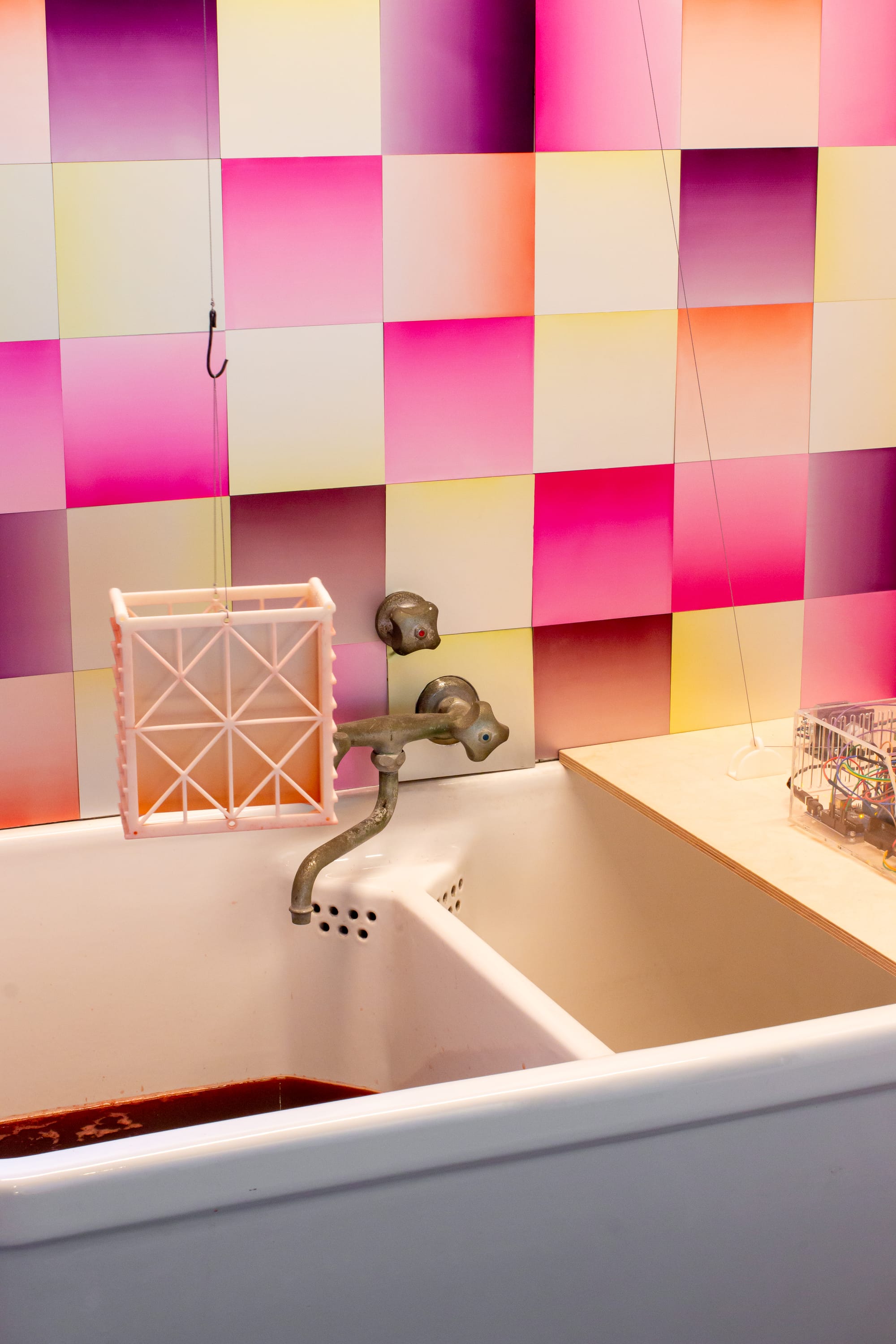
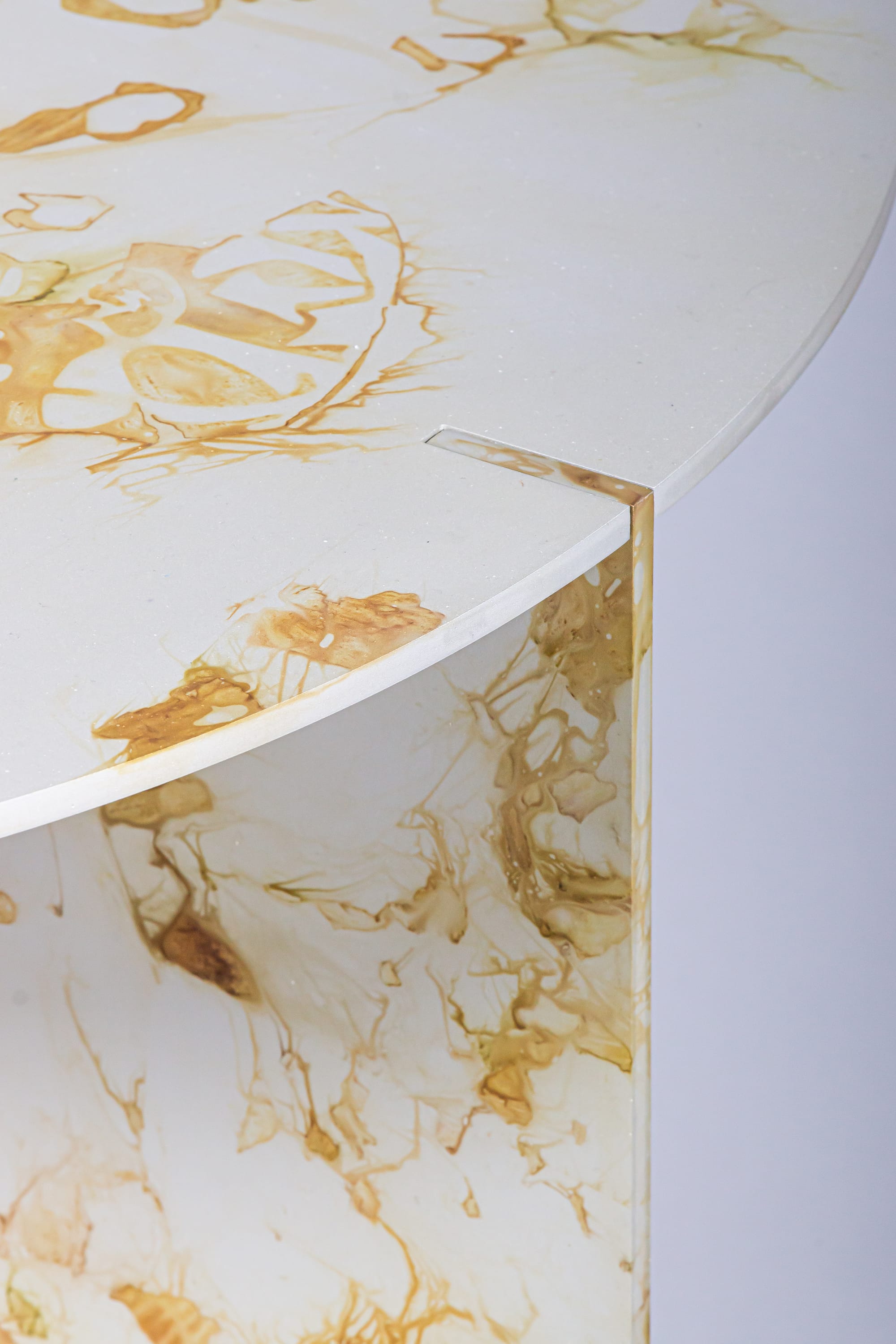
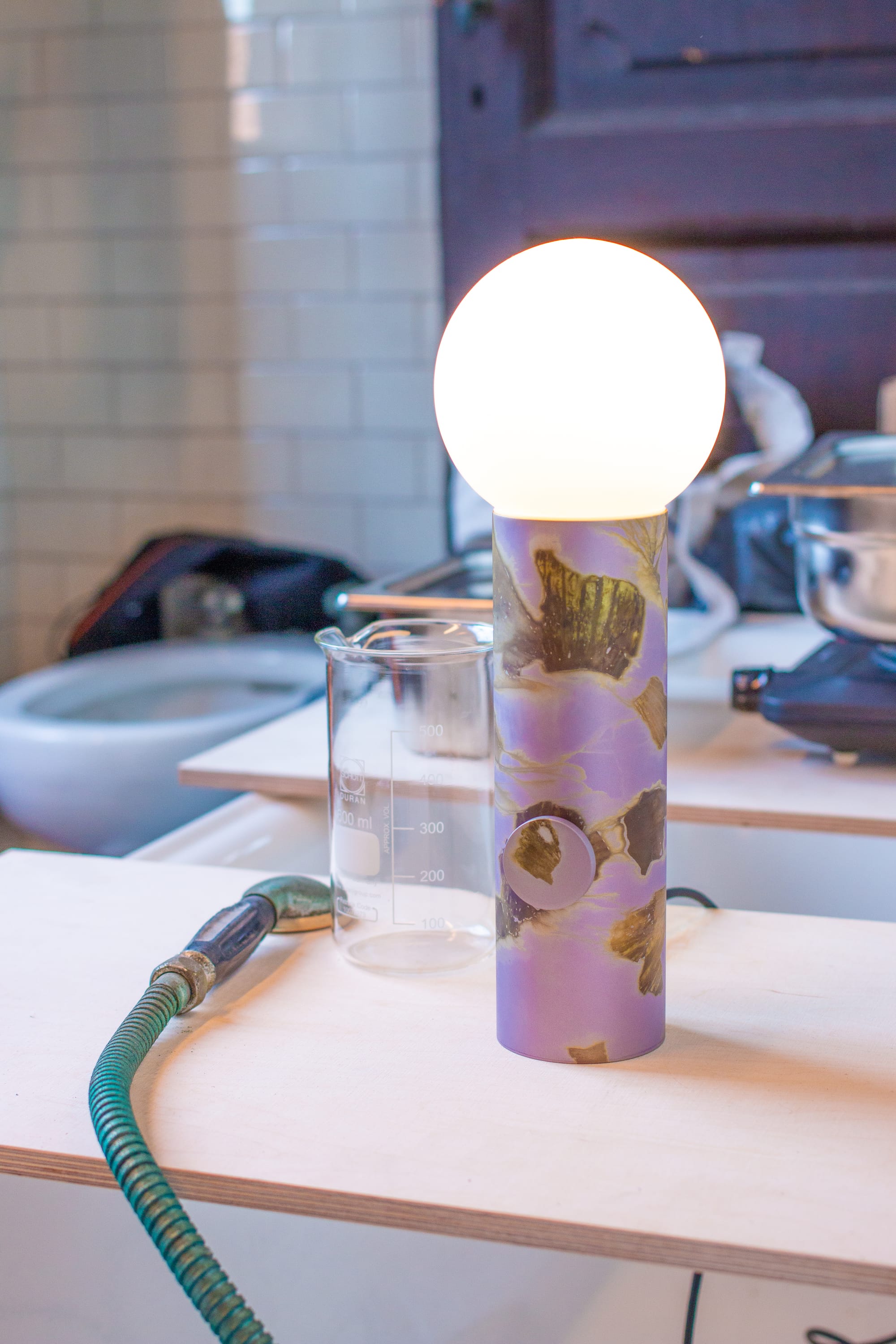
Photos courtesy of Studio LoopLoop
"In our pursuit of innovative and sustainable materials, we challenge conventional industrial standards, exploring how each new material and tool can be shaped to fit their intended context. By emphasising the unique qualities of these materials, we aim to enhance their emotional value and ensure they resonate within their environment, " said Co-Founder Odin Visser.
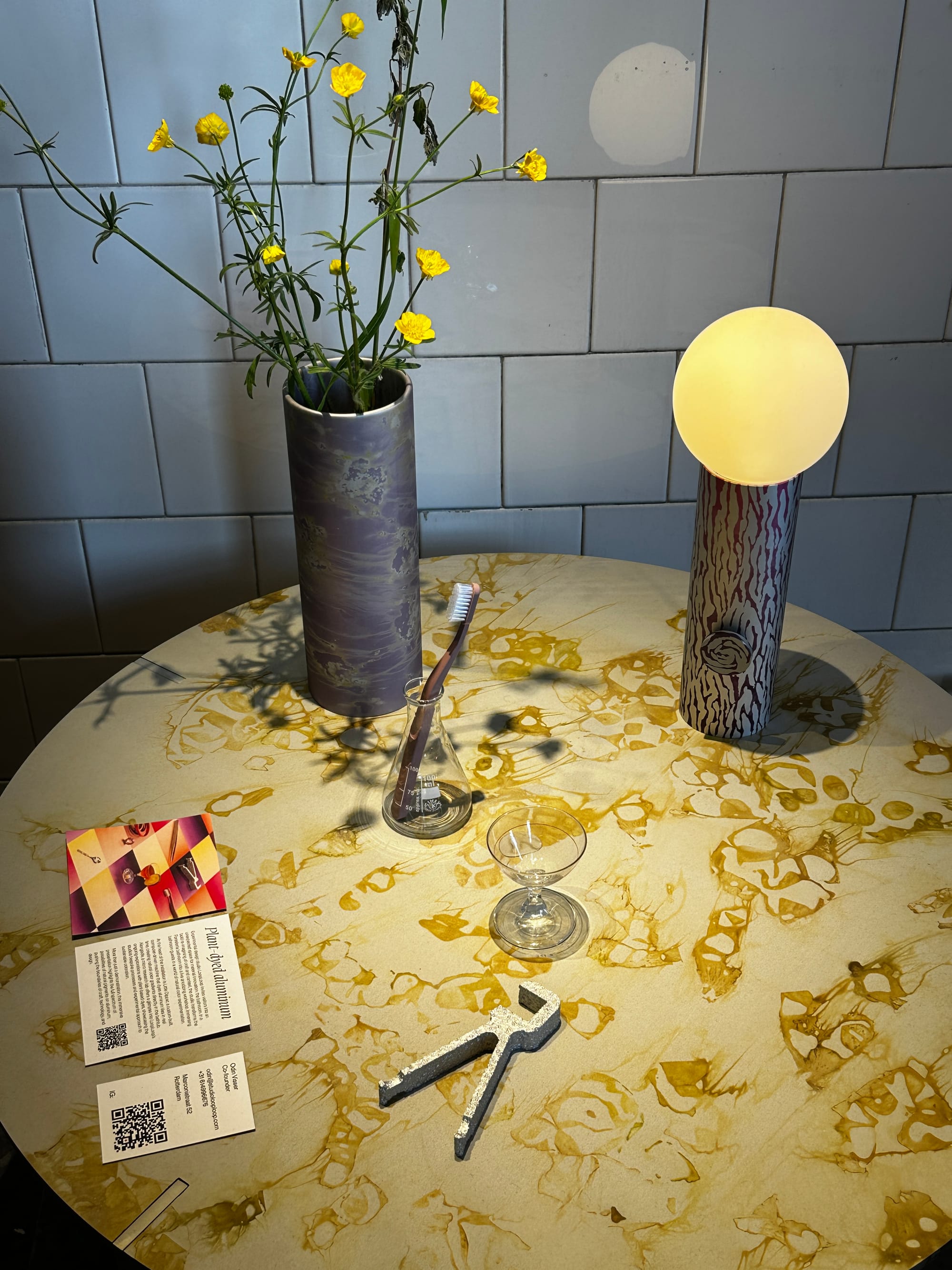
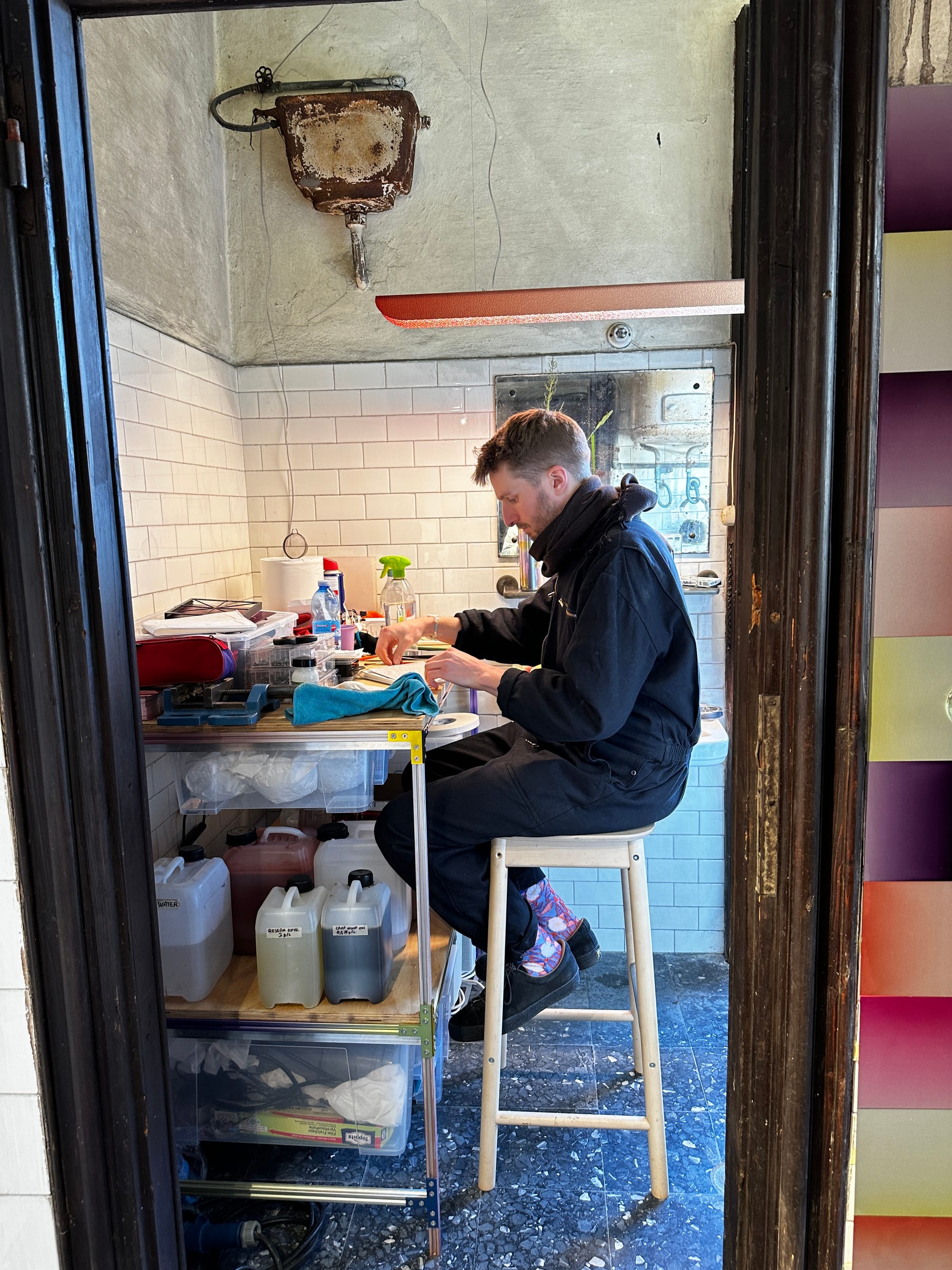
Photos by Fiona Coleman
Shakti Design Residency
The Shakti Design Residency at Alcova showcased work at Villa Bagatti Valsecchi which was created during the inaugural residency. Founded by interior architect Shalini Misra, the residency is an initiative that brings together emerging global designers and skilled Indian artisans under the mentorship of a prestigious panel. Each year, Misra selects a cohort of residents with the help of a judging panel.
The 2024 program took place in New Delhi, Jaipur, and Mumbai, with partner ateliers including the Chanakya School, Jaipur Rugs, KLOVE Studio, Tarun Tahiliani, and Vikram Goyal Studio.
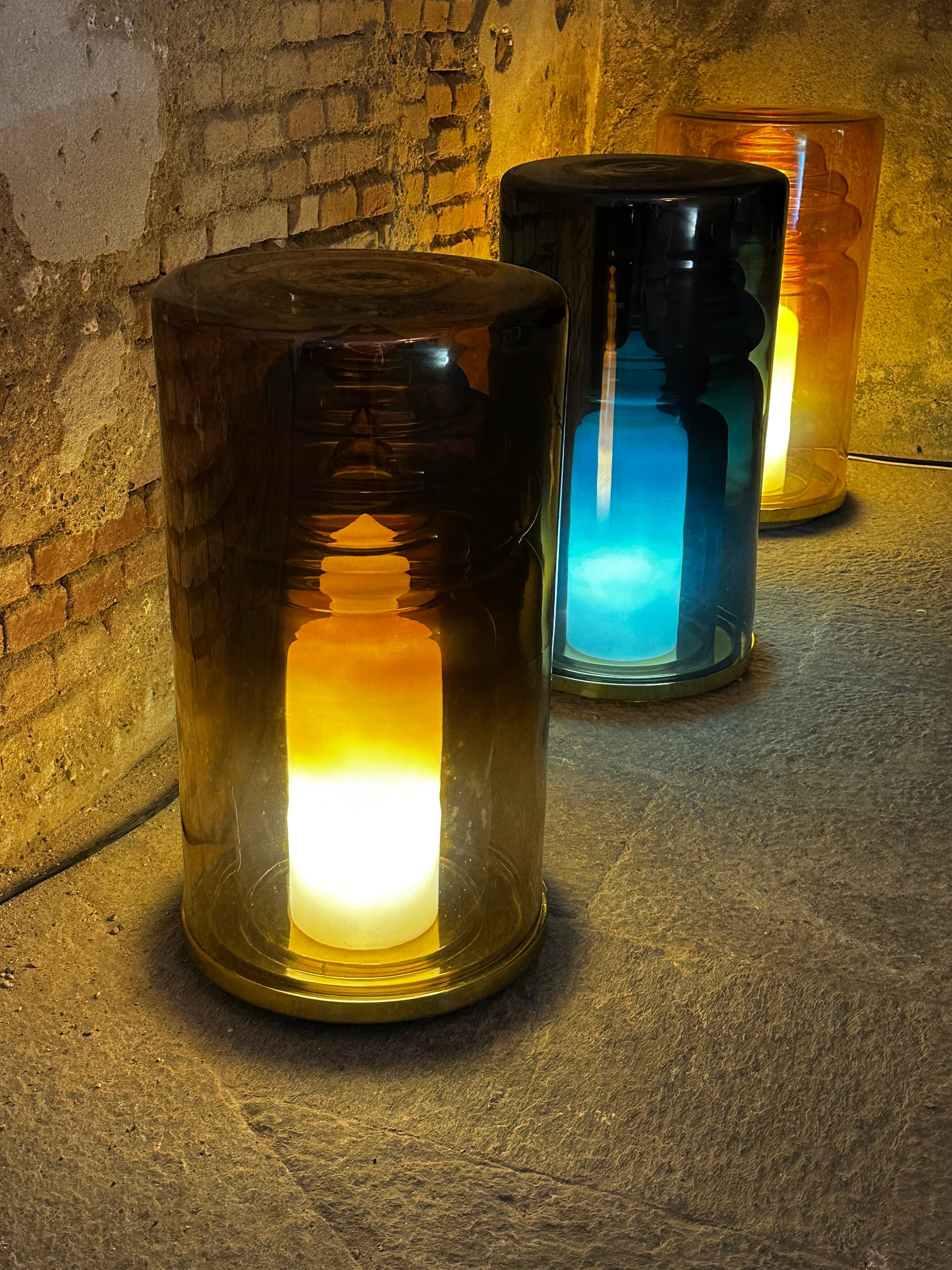
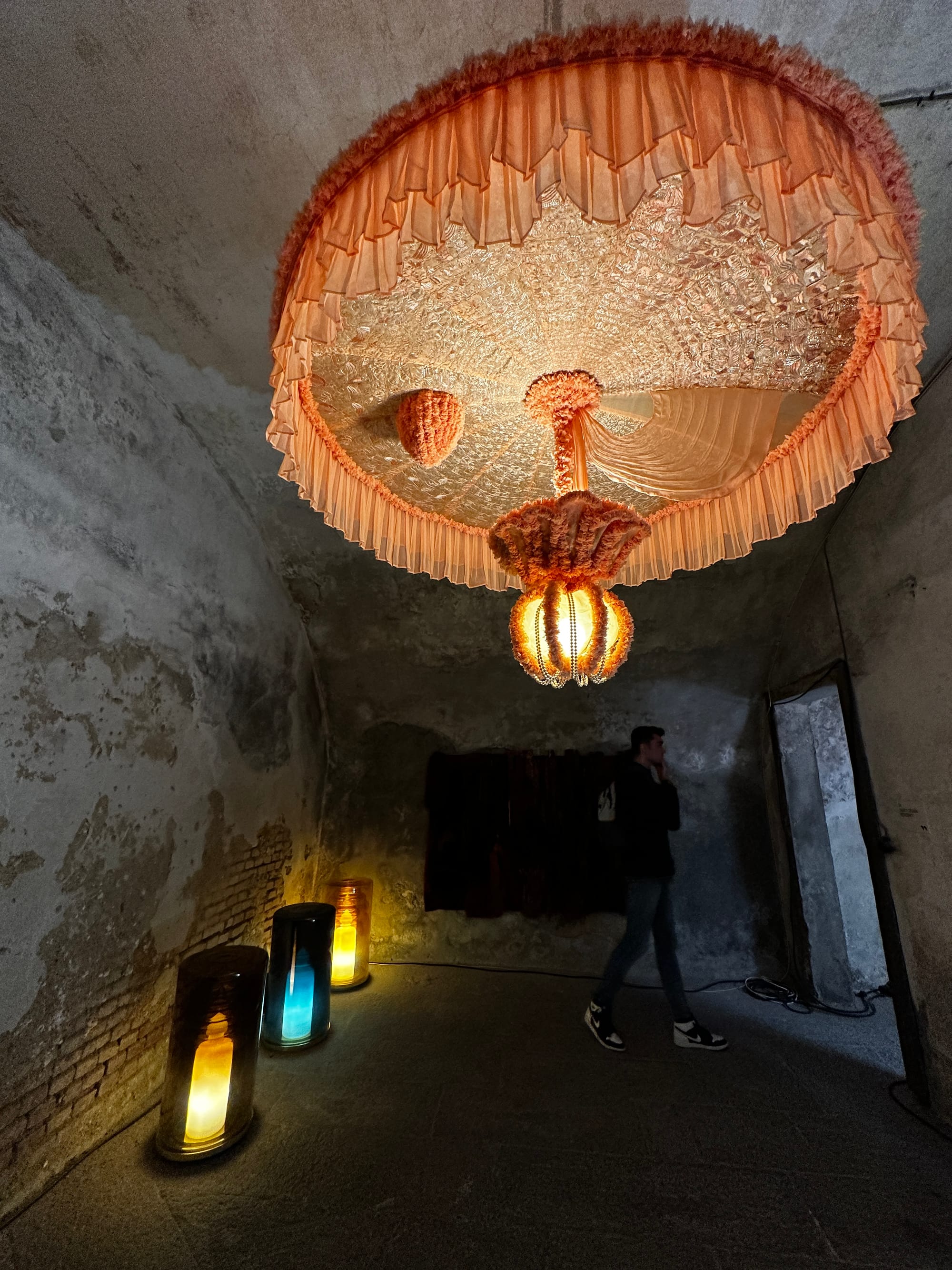
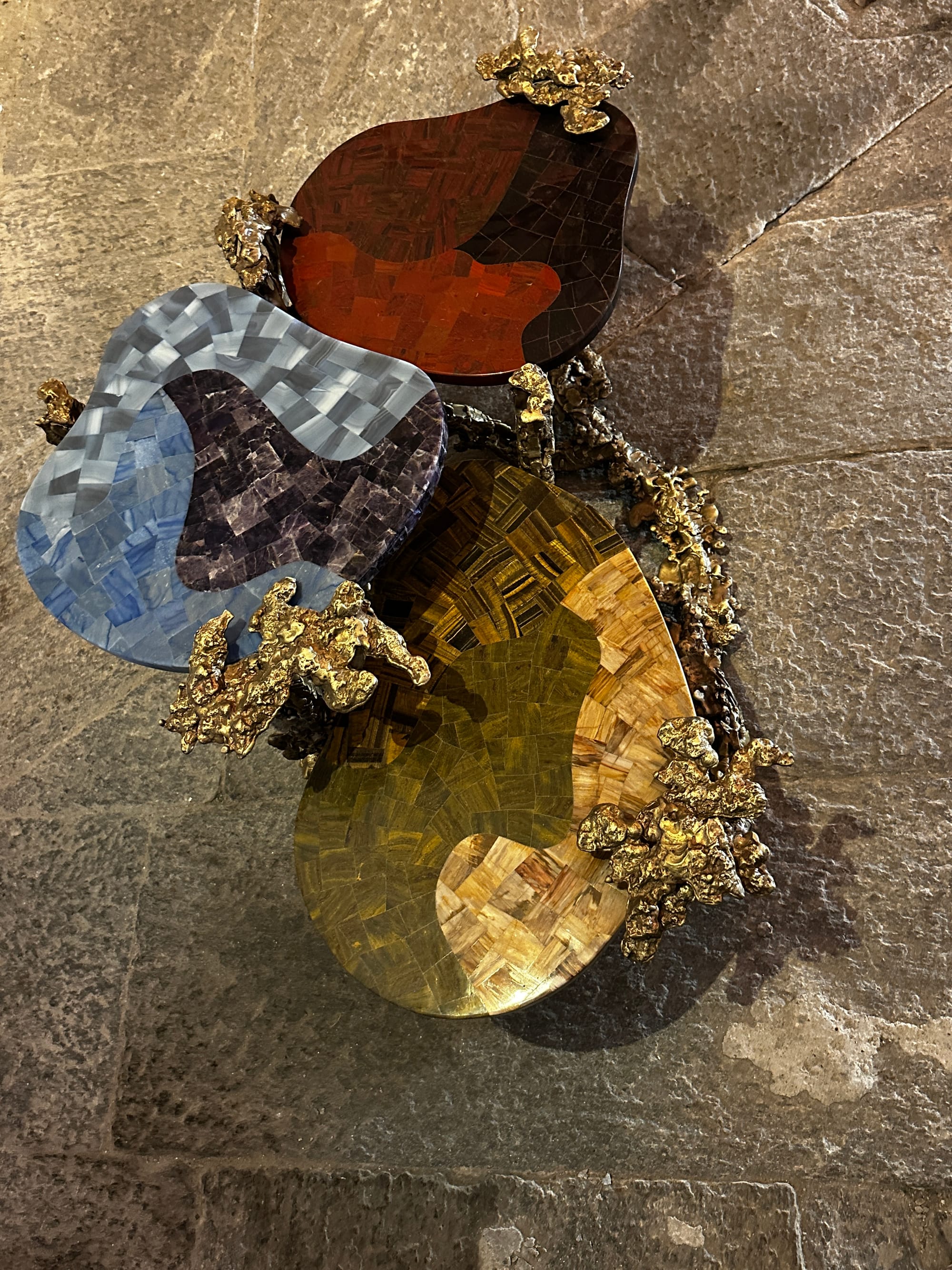
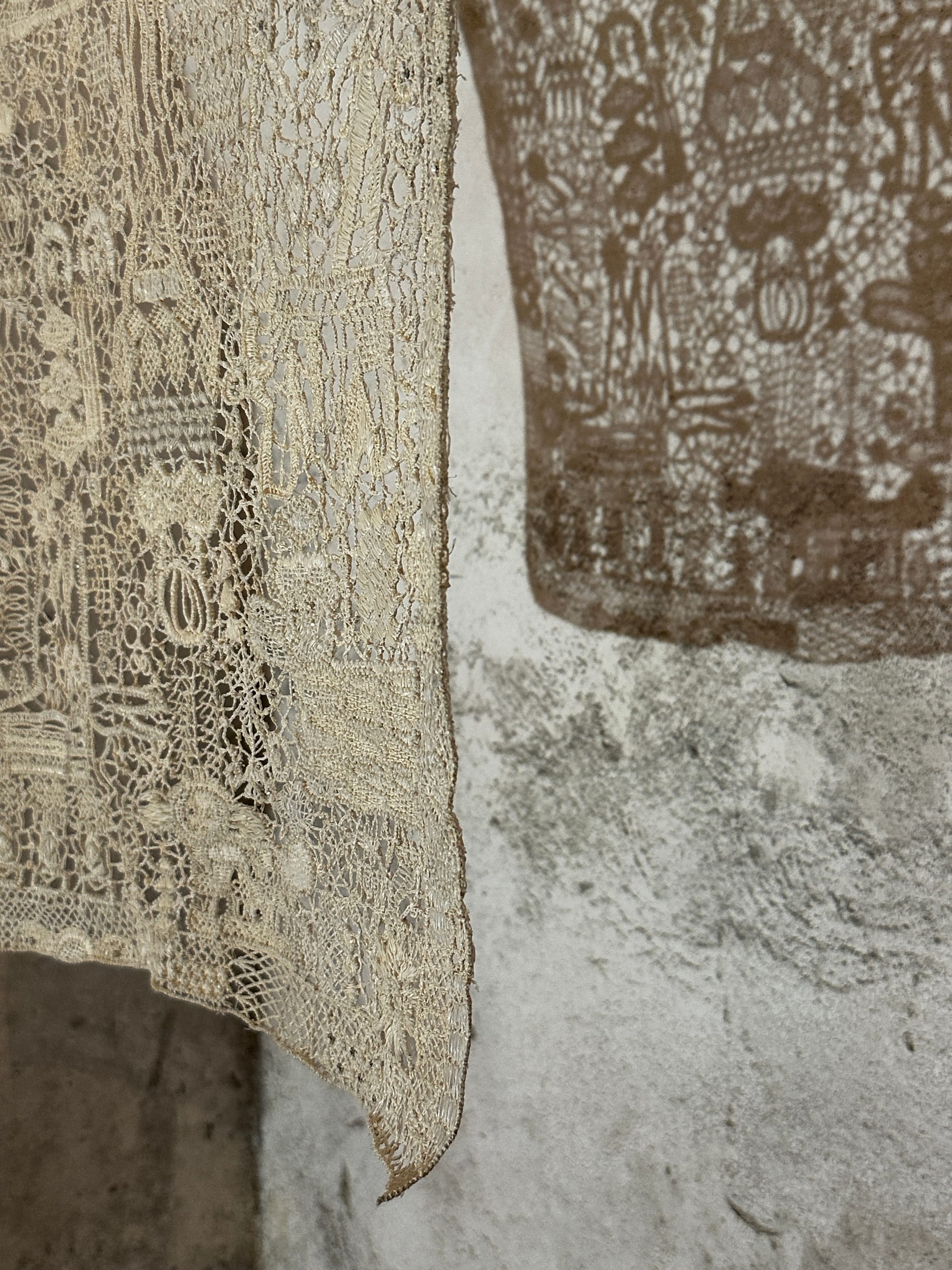
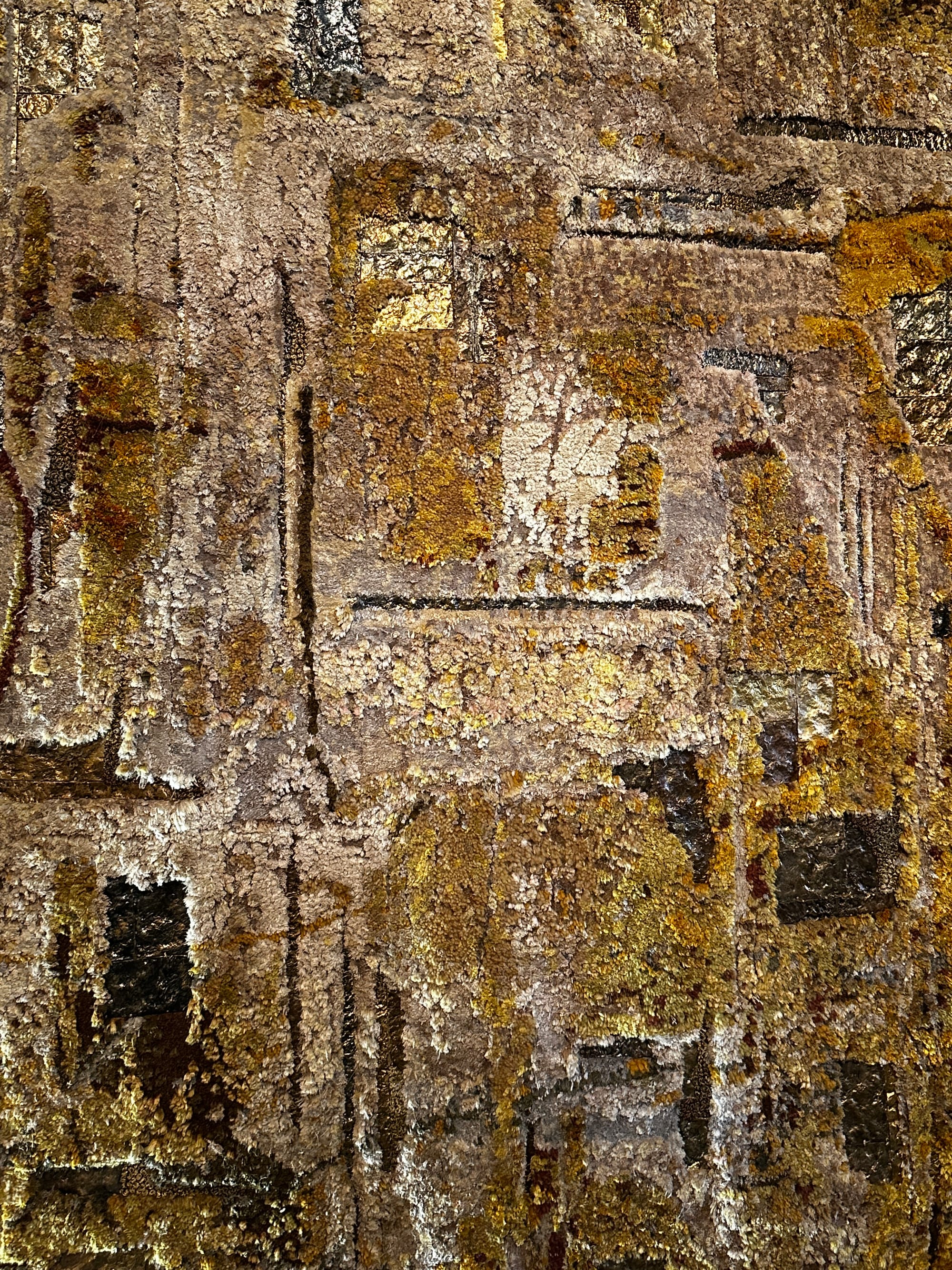
Photos by Fiona Coleman
Casa Amar
At Salone Satellite, Moroccan rugs created with luxurious Italian silk scraps stole the show. With the support of Artist Lillian Grant and Taroni, Moroccan rug company Casa Amar transformed silk remnants into exquisite rugs and tapestries.
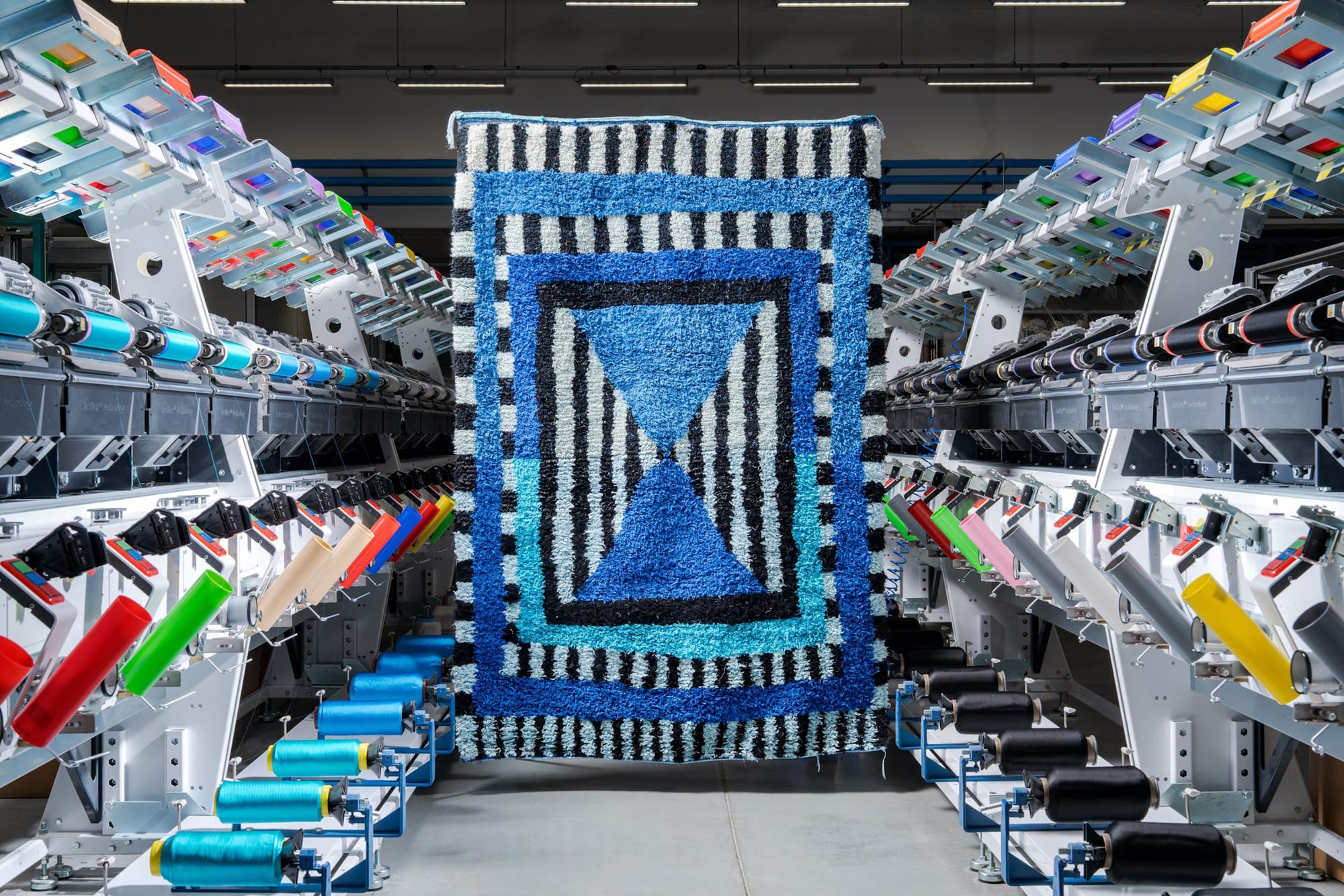
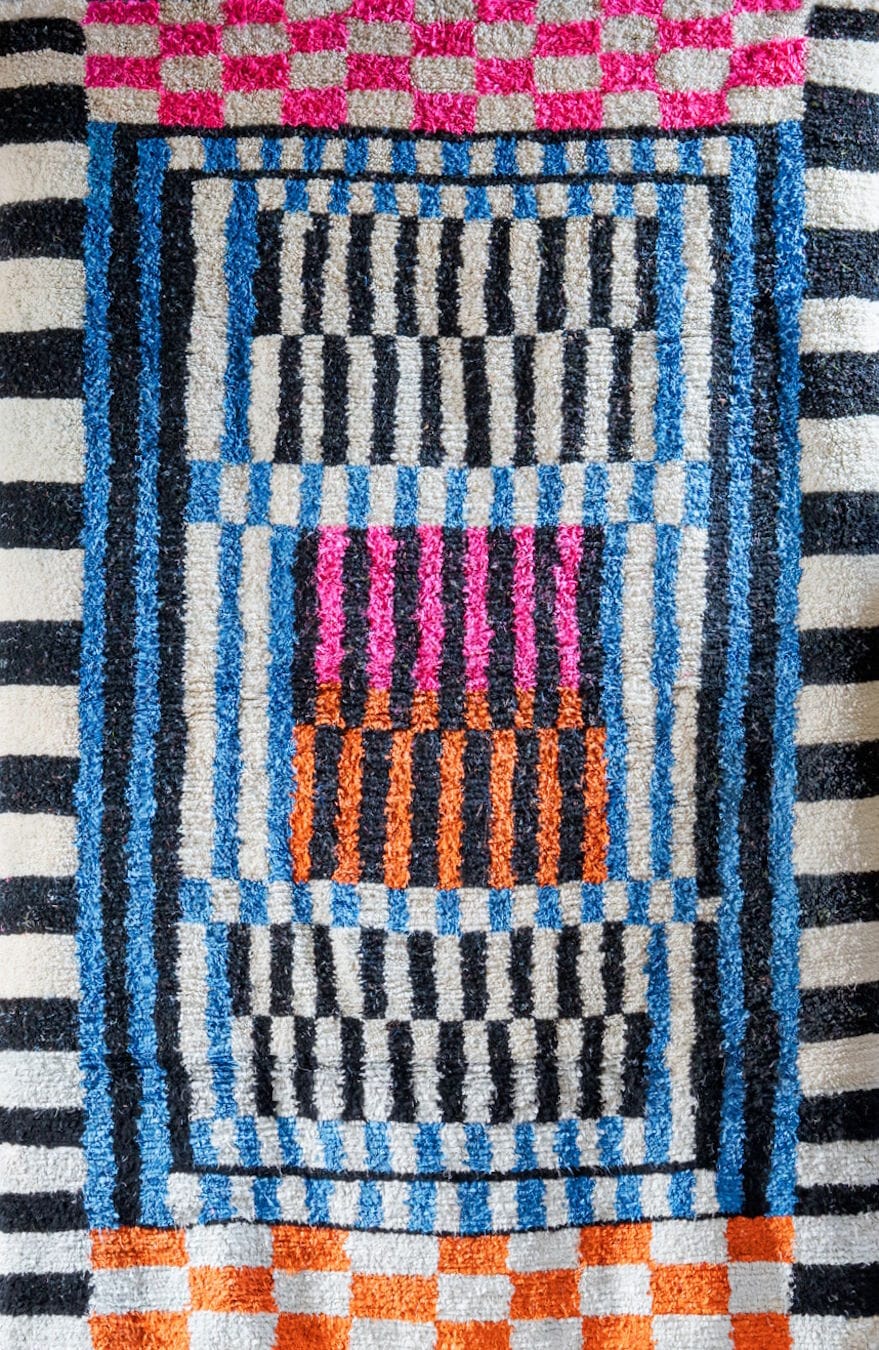
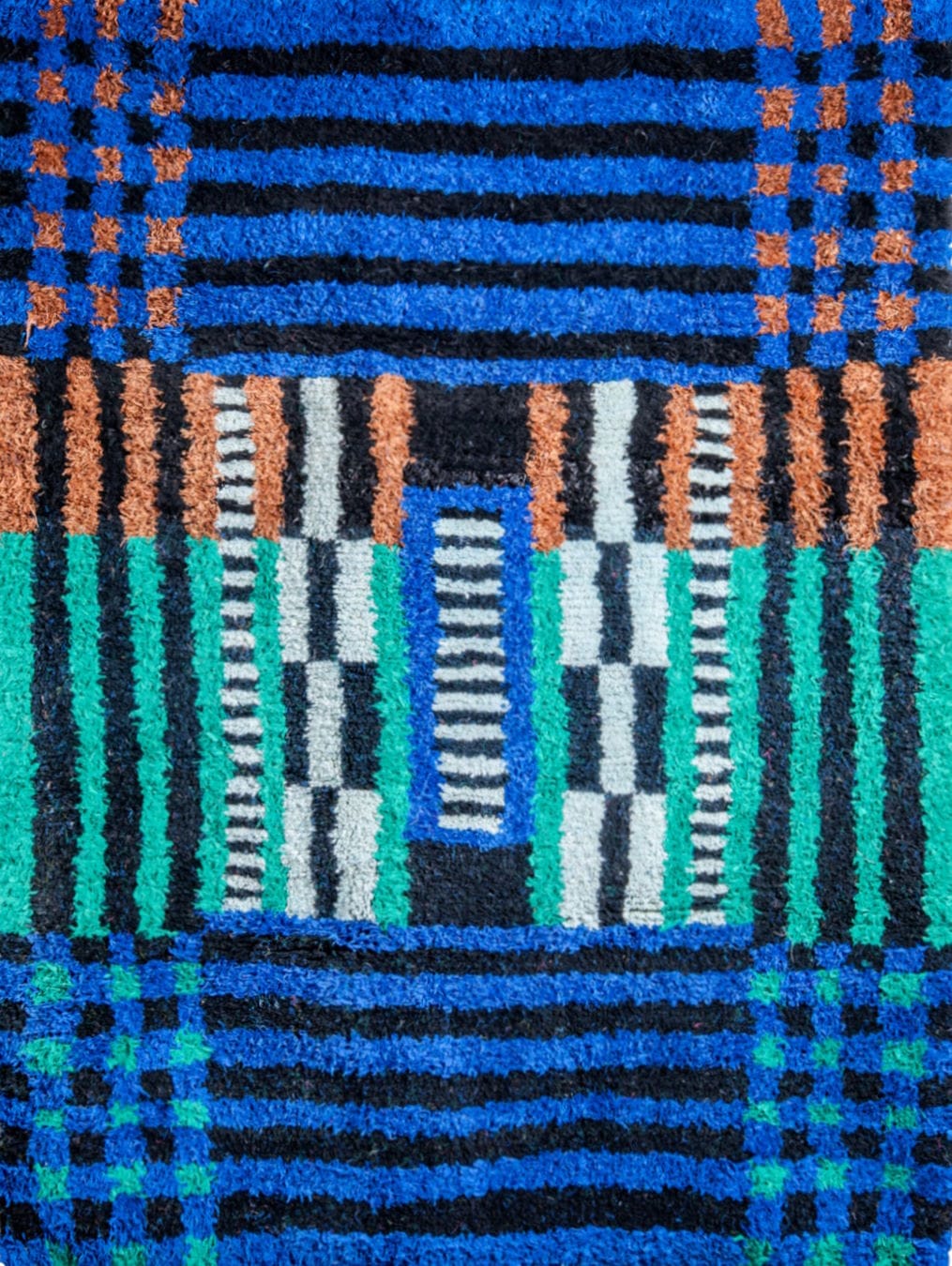
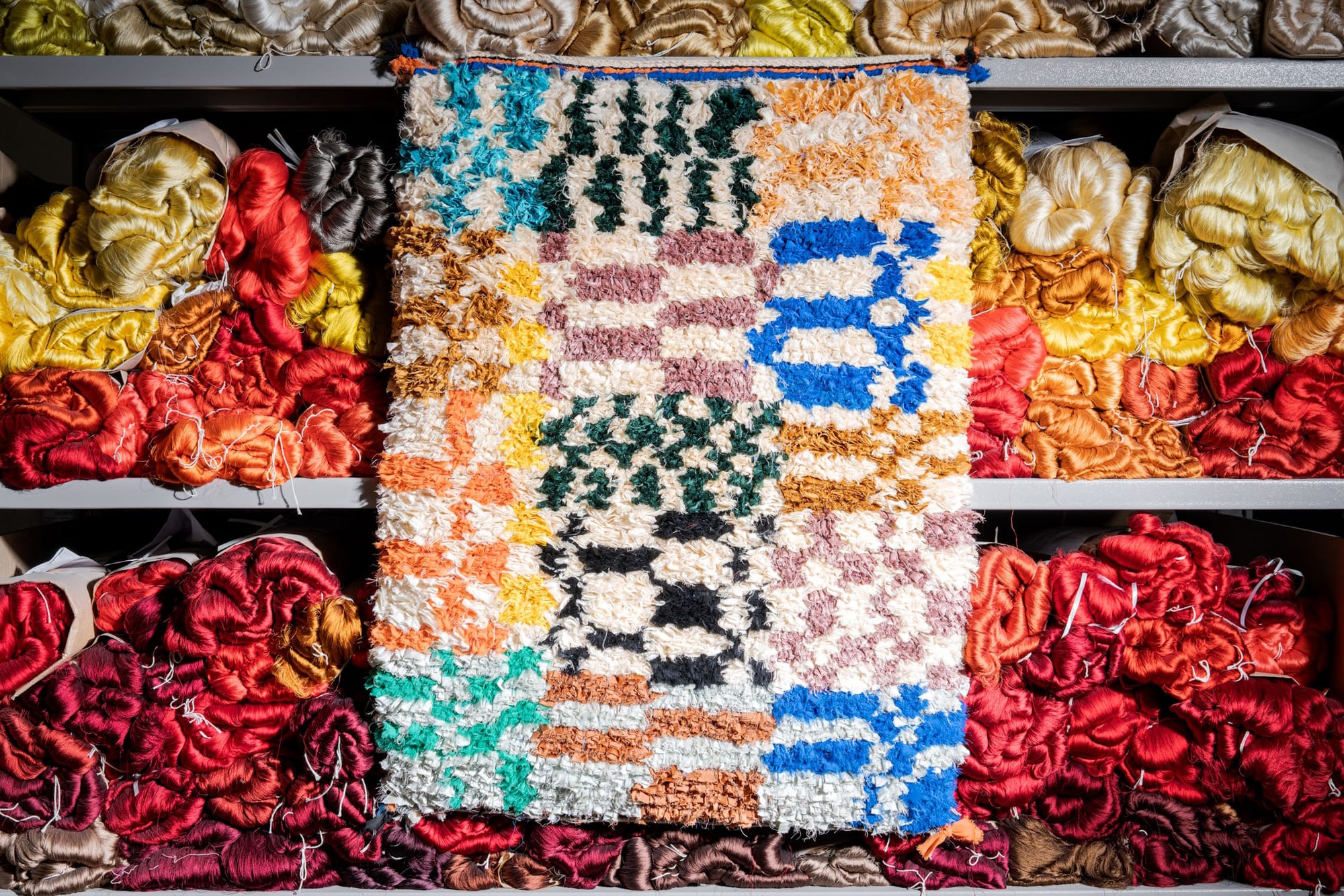
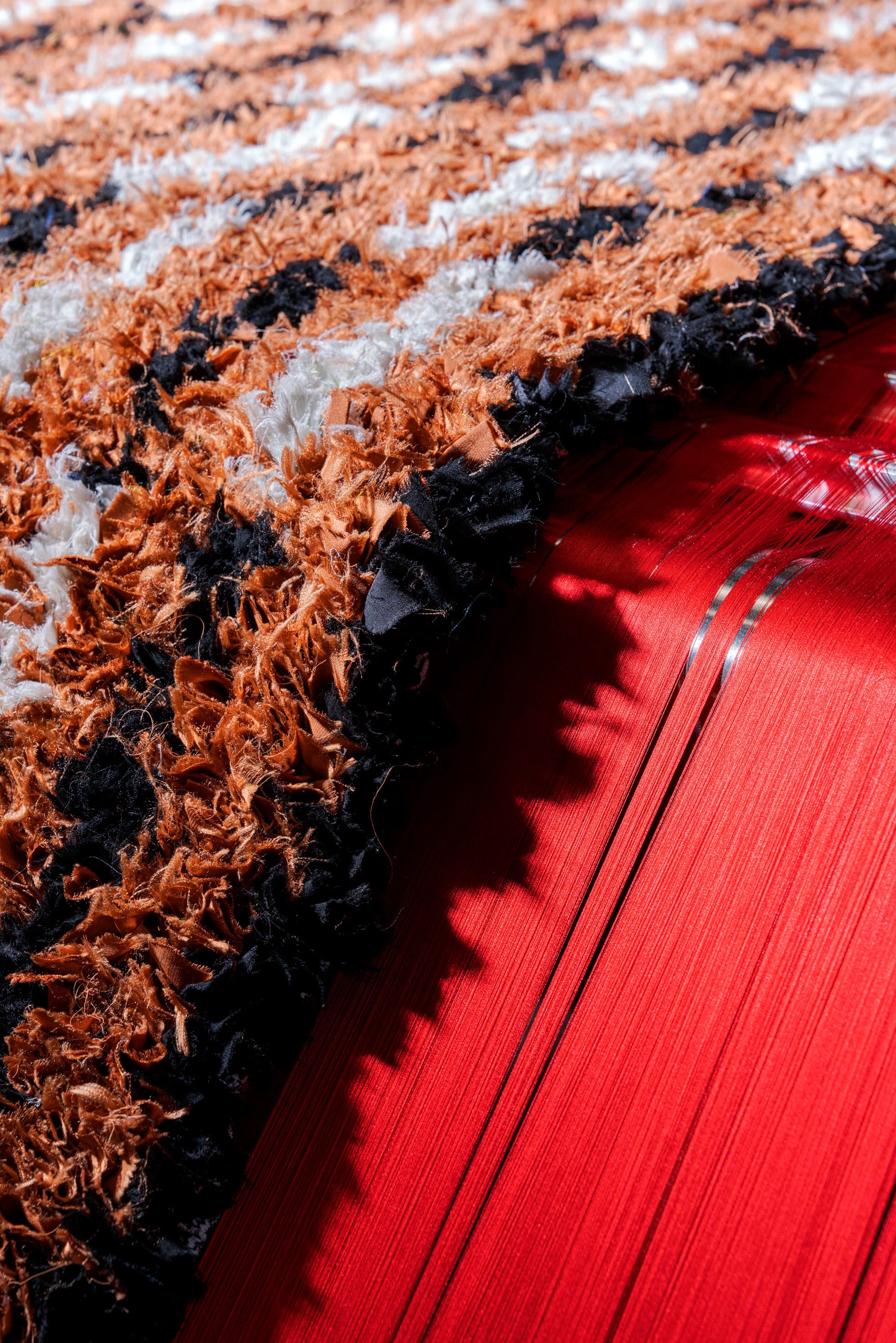
Photos by Cortili Photo Studio
Casa Amar works with artisans in Azilal, Morocco who meticulously hand-craft Boucherouite rugs woven together with the personality of the maker and centuries of history. Traditionally, these rugs are made with the scraps of used clothing and Casa Amar's founders, Jihane and Matteo, wondered: "How can we honor this Moroccan tradition and elevate its beauty?" Through their collaboration with the esteemed silk-weaving mill founded in 1880 in Como, Taroni, Casa Amar was able to create an elevated product while respecting their Moroccan roots and their vibrant cultural identity.
Romantic Brutalism: A Journey into Polish Craft and Design
To celebrate 100 years since the 1925 Exposition Internationale des Arts Décoratifs Modernes in Paris, the Visteria Foundation, founded by Katarzyna Jordan, organized a Polish art and design showcase for Milan Design Week. Curated encounters focus on nature, post-nature, and the influences of Brutalism, romanticism, decadence, folk, and art deco on contemporary Polish design.
Twenty-three designers highlight materials like wood, glass, ceramics, steel, lace, and textiles. The exhibition design by Zuza Paradowska resembles a theatrical set, transforming tearooms and corridors into an engaging experience. The curatorial framework examines the relationship between brutalist aesthetics and romanticism, two contrasting yet connected influences in Polish design.
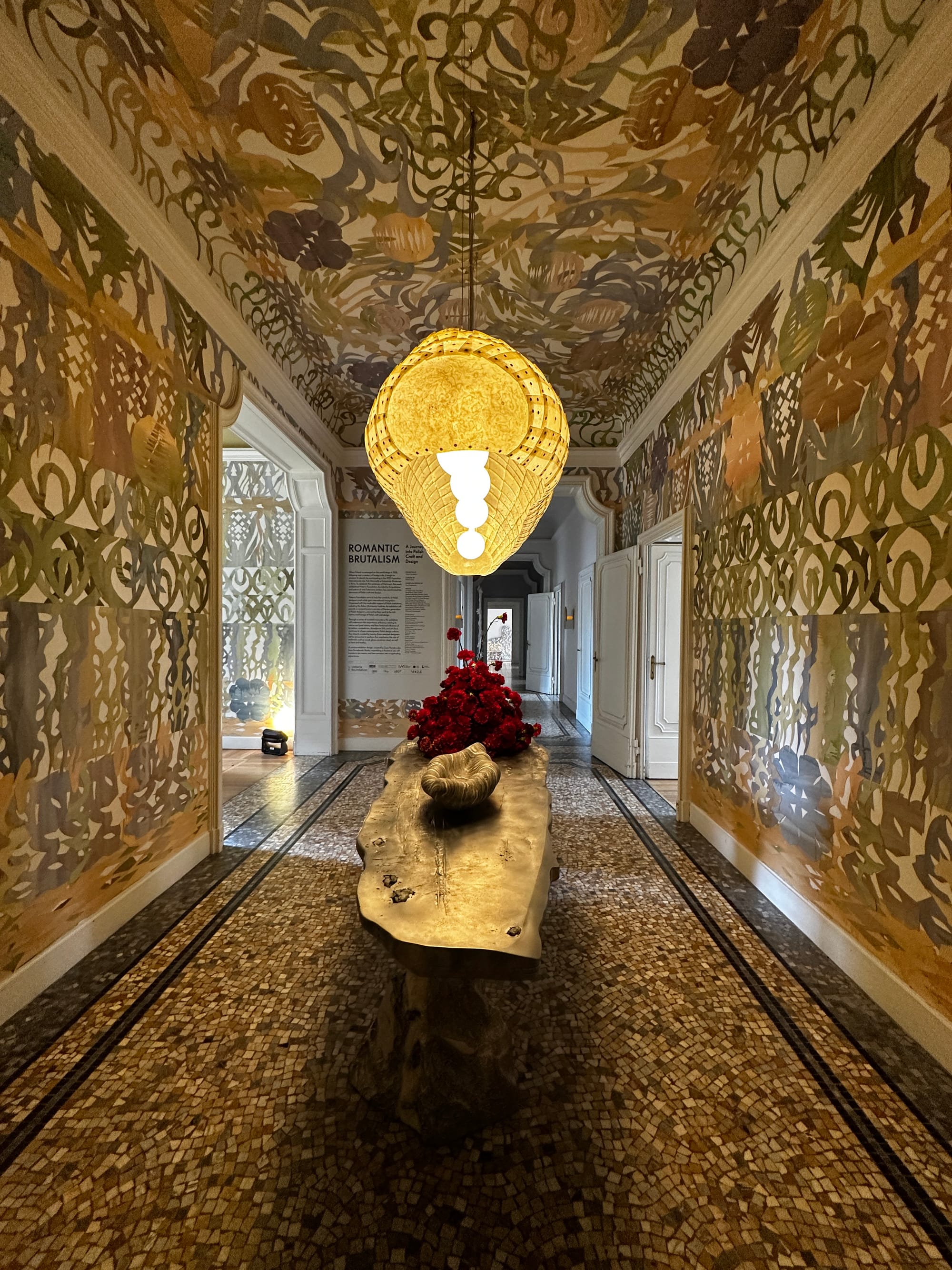
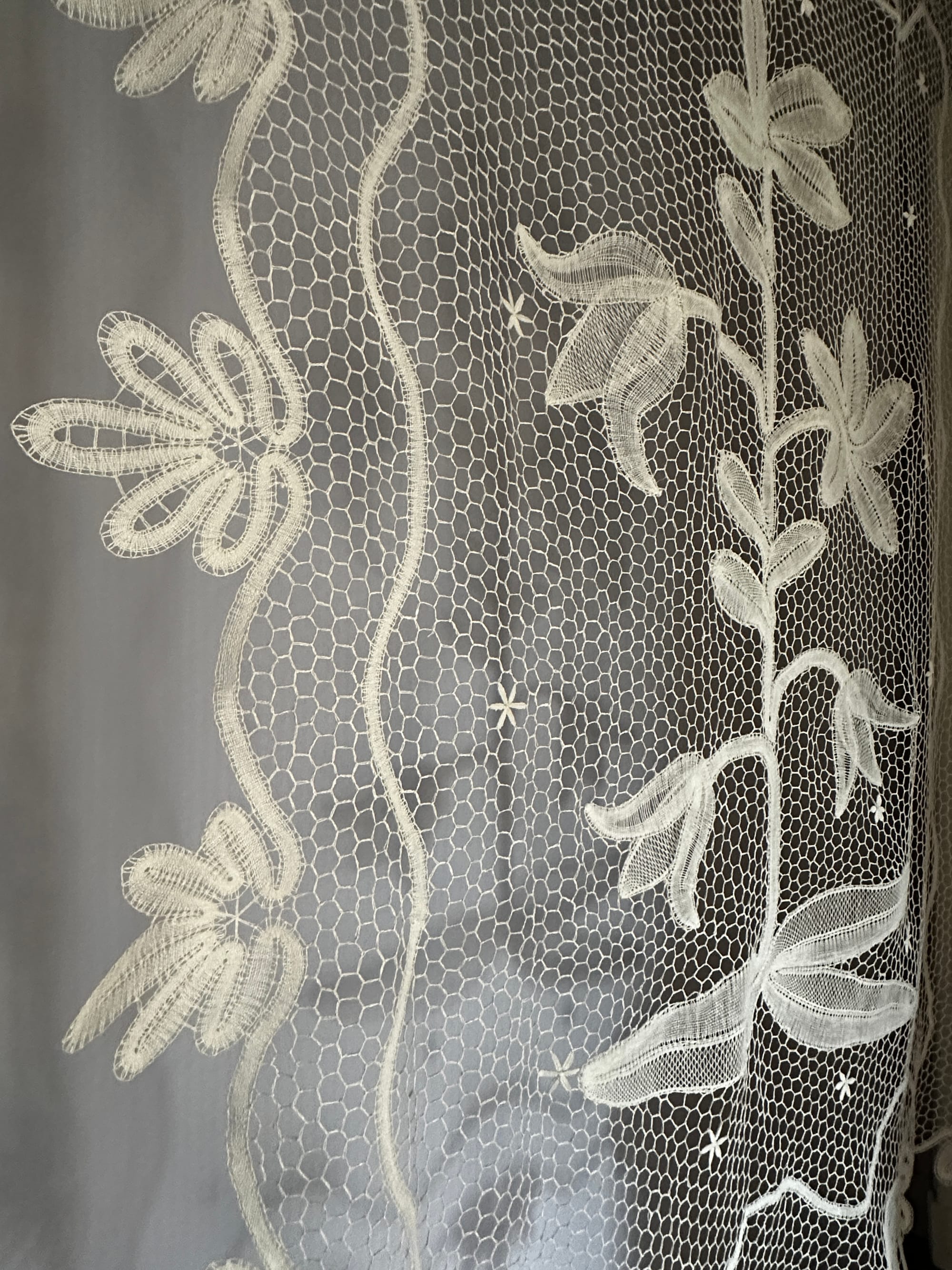
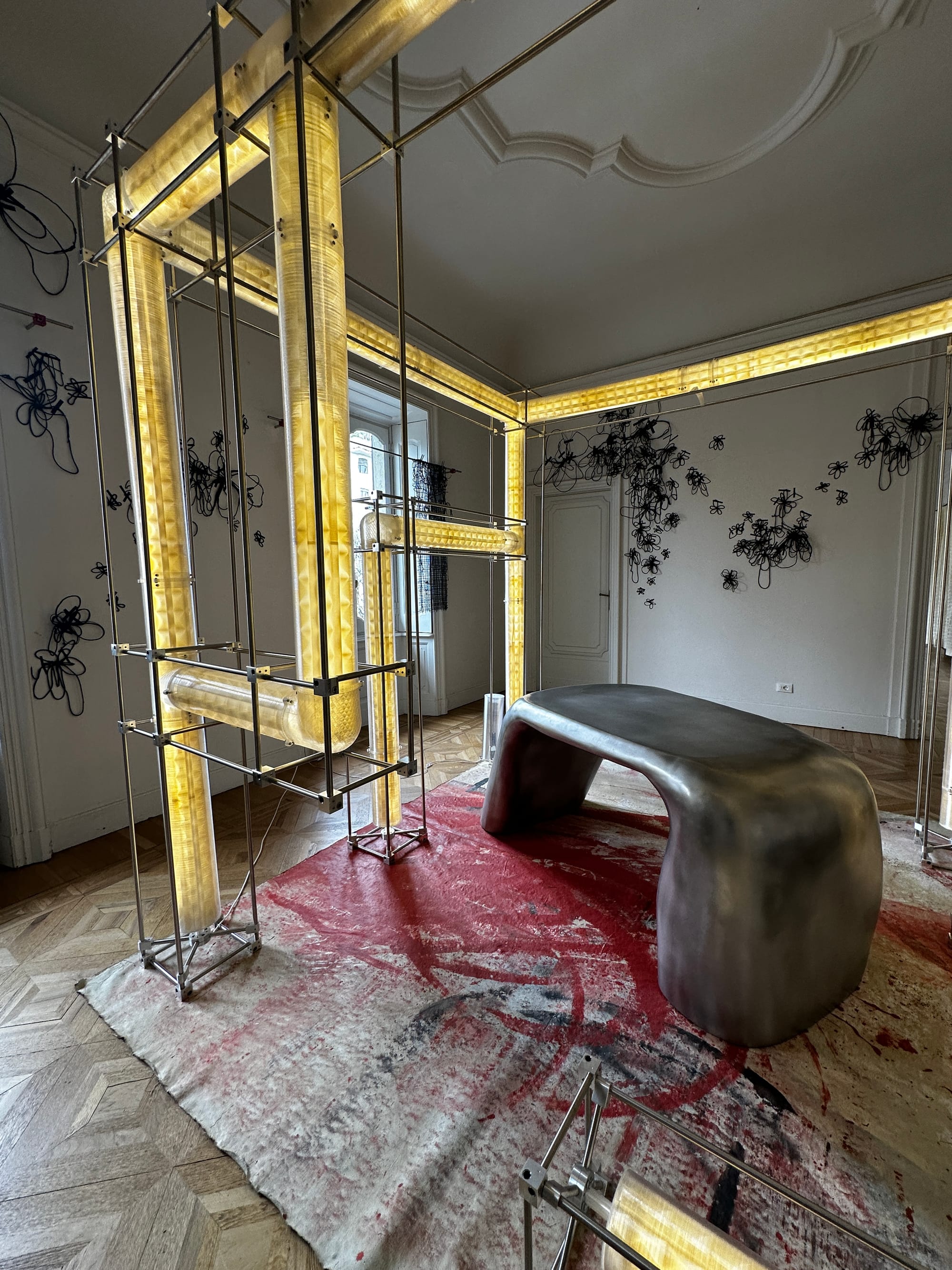
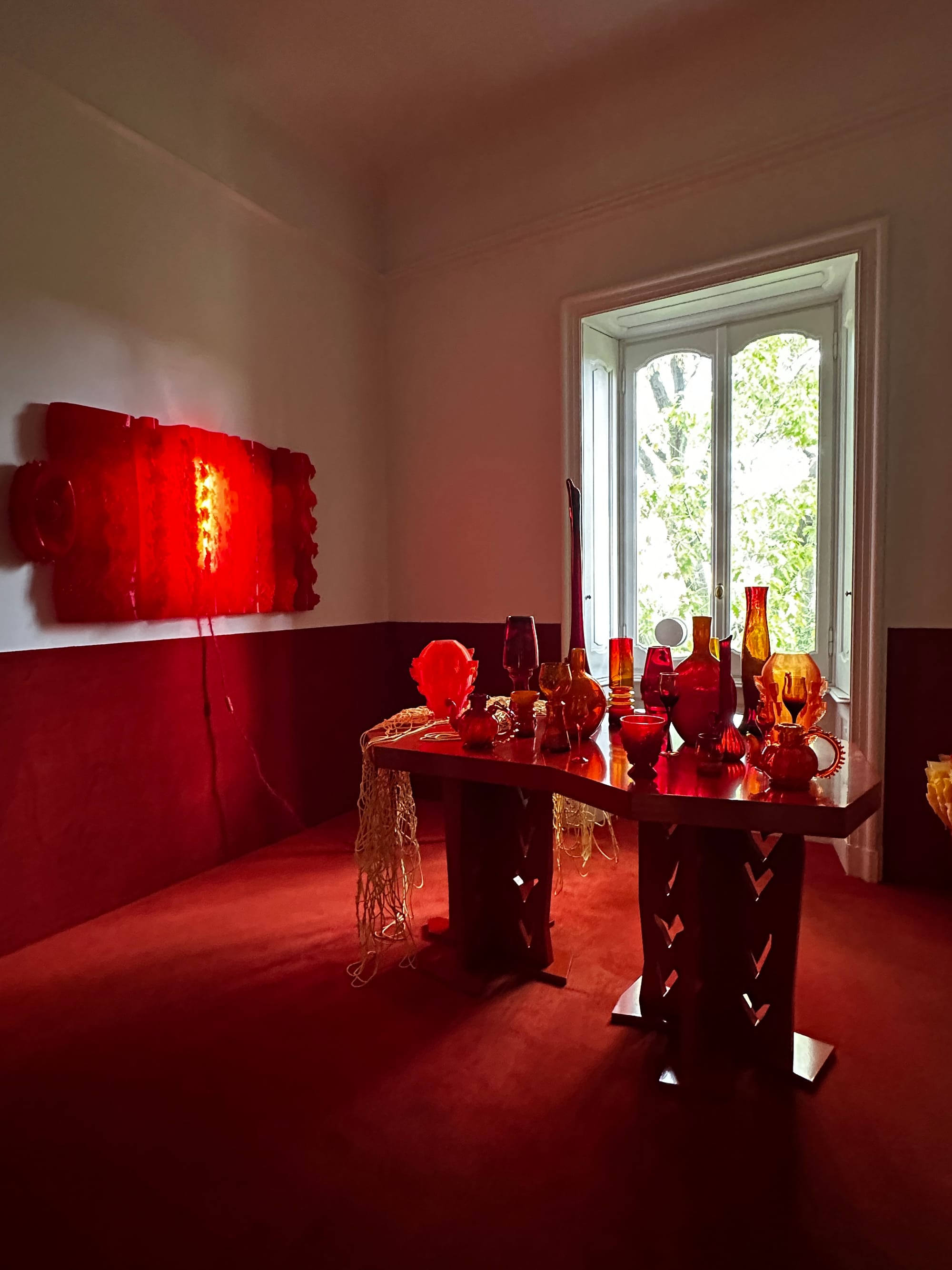
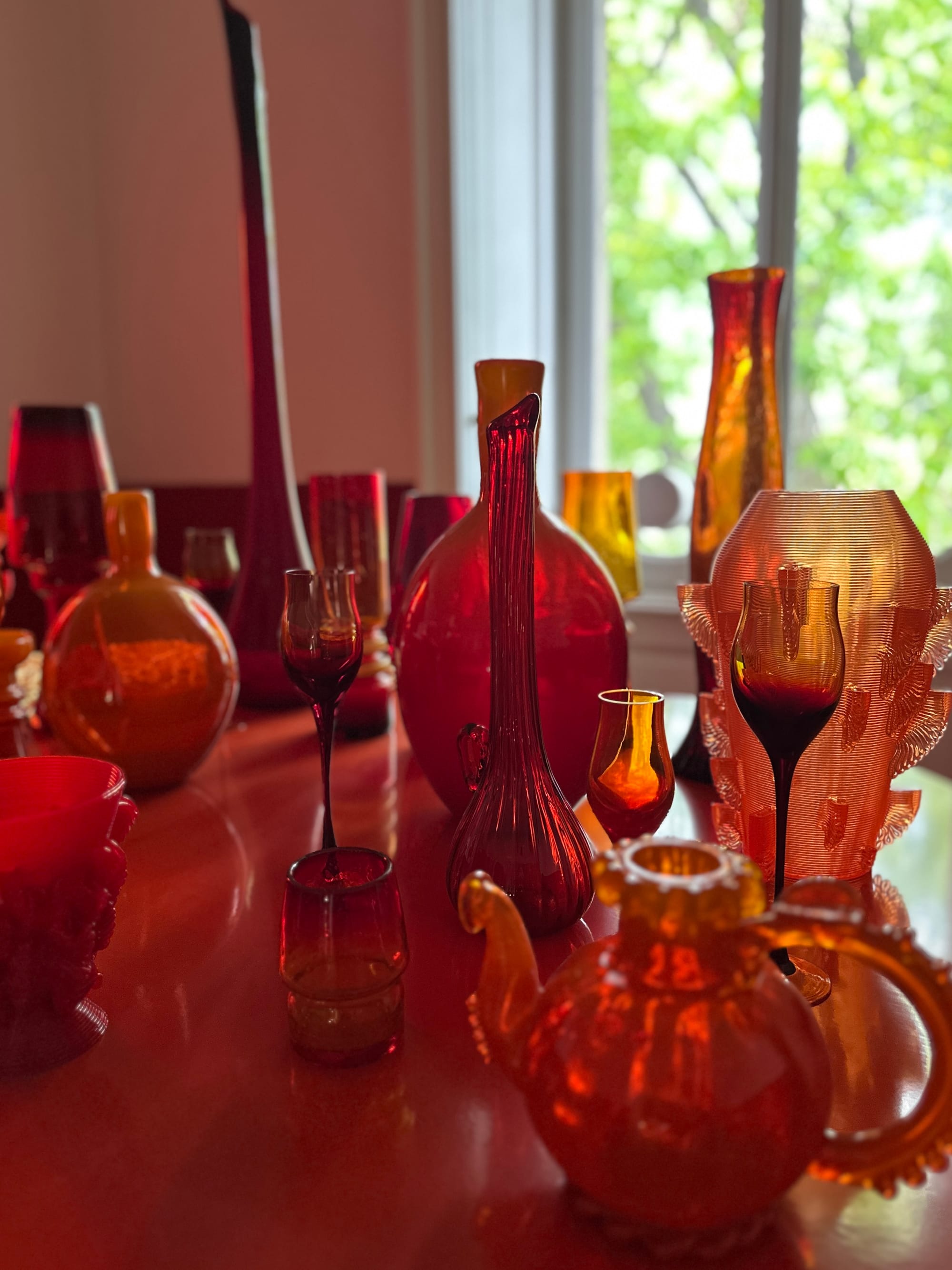
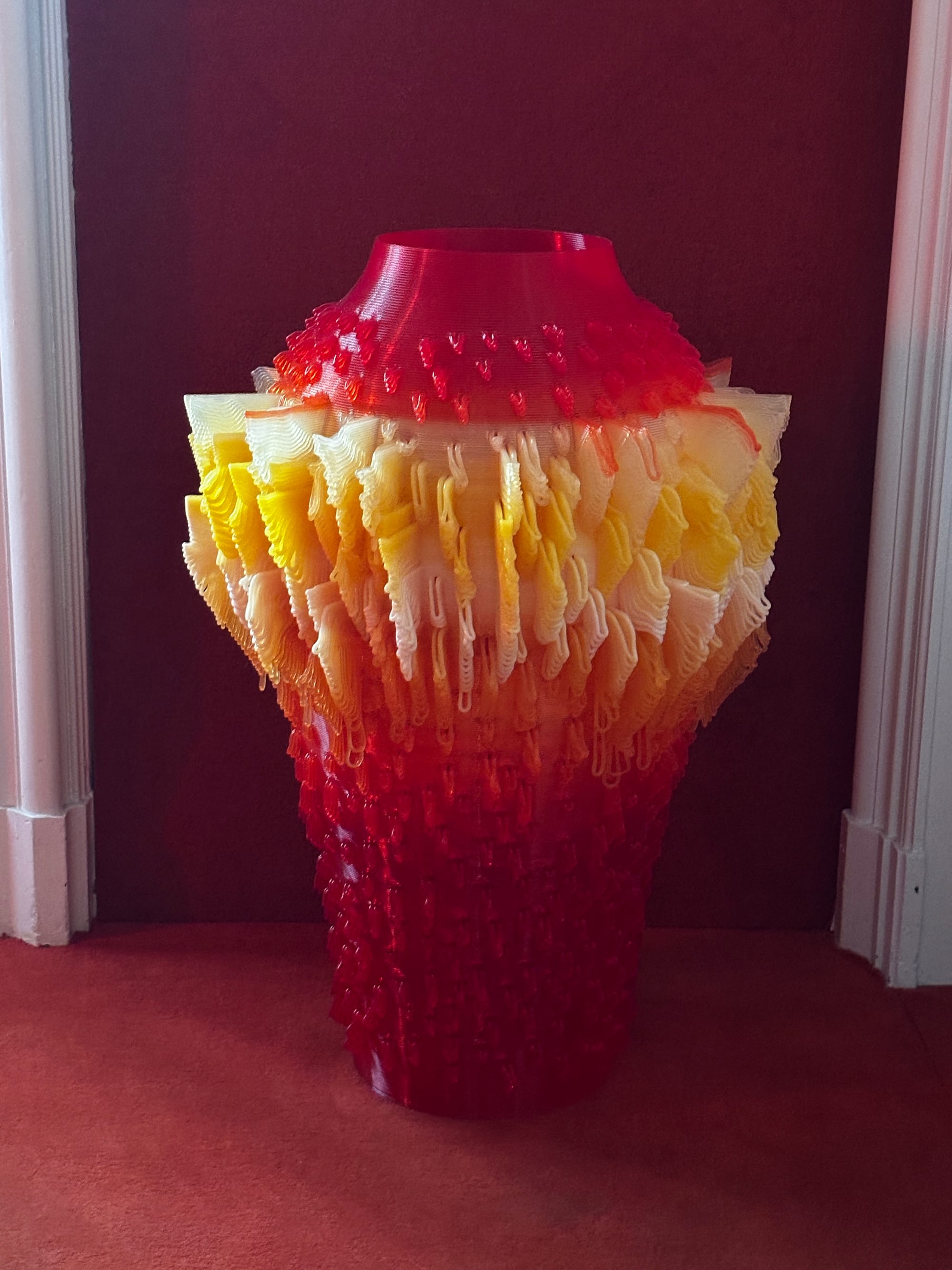
Photos by Fiona Coleman.
Historical references link contemporary works to past movements. The venue complements the curated works and reinforces the connection between craftsmanship and modern design. Designers Jan Ankiersztajn, Aleksander Oniszh, Anna Bera, and others are featured alongside studios like Formsophy and Giewont Studio. SZKŁO, founded by Aleksandra and Wojciech Zawistowski in 2022, creates functional glass sculptures and collectible design objects. Each hand-blown piece, crafted by Alessandra Zawistowska and a team, is unique and shaped through an experimental process without moulds, emphasizing the material's natural qualities. UAU Project, a Warsaw-based studio founded by Justyna Fałdzińska and Miłosz Dąbrowski, focuses on consumer-oriented 3d printing for home production, committed to using high-quality compostable or recyclable materials for sustainable design.
CHELEBI
CHELEBI presented ‘PLAITE’ at Alcova during Milan Design Week transforming the kitchen at Villa Borsani. Created by Aida Mahmudova, founder of the Azerbaijani brand CHELEBI, and Spanish designer Natalia Ortega of Worn Studio, the collection explored weaving "as a technique and a language". Each sculptural piece for kitchen and home was designed to unite materials from blown glass, ceramics, porcelain, wood, and metal, to bound in leather and natural fibers. Crafted by artisans using age-old techniques, the collection captured the dialogue between structure and fluidity, heritage and reinvention.
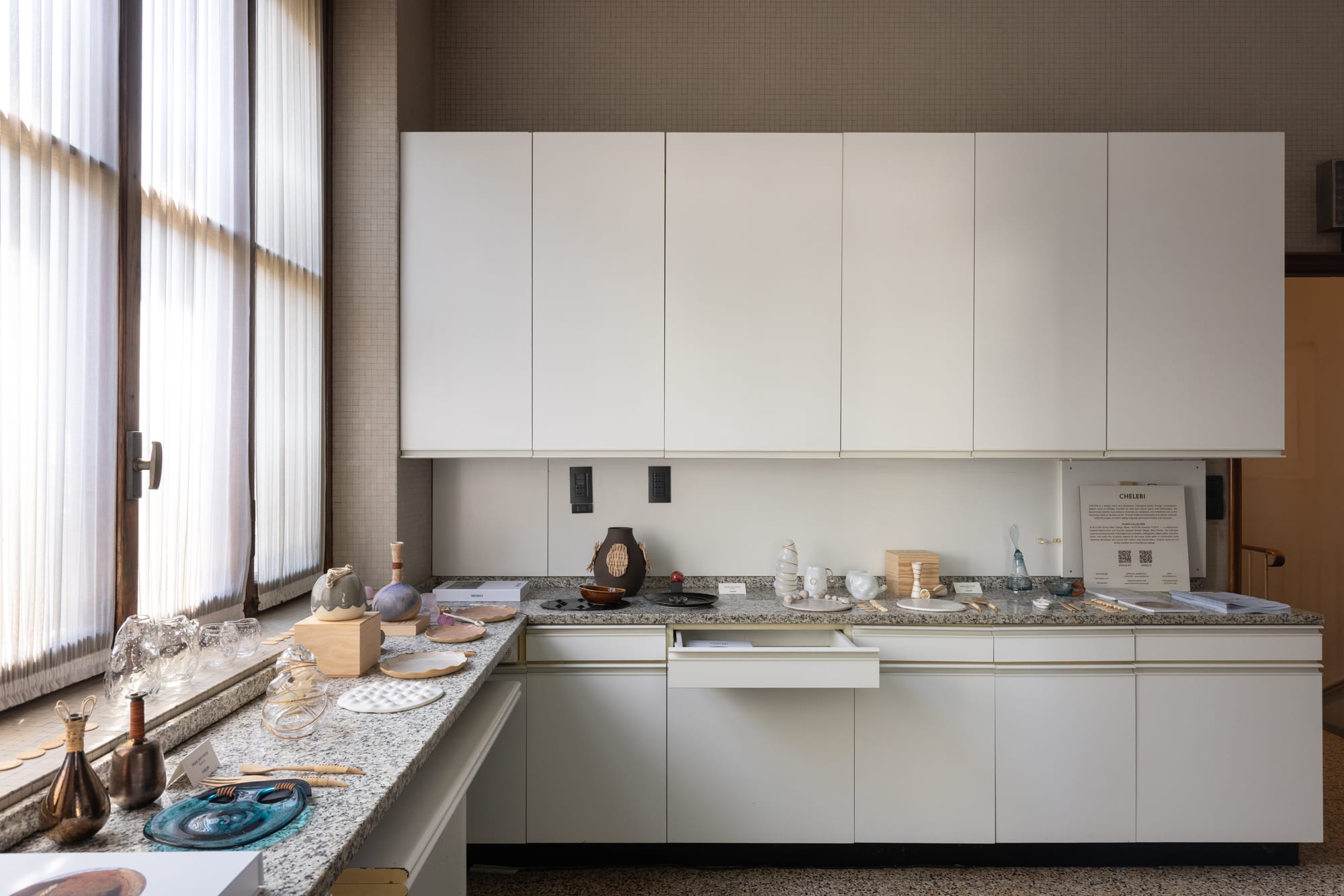
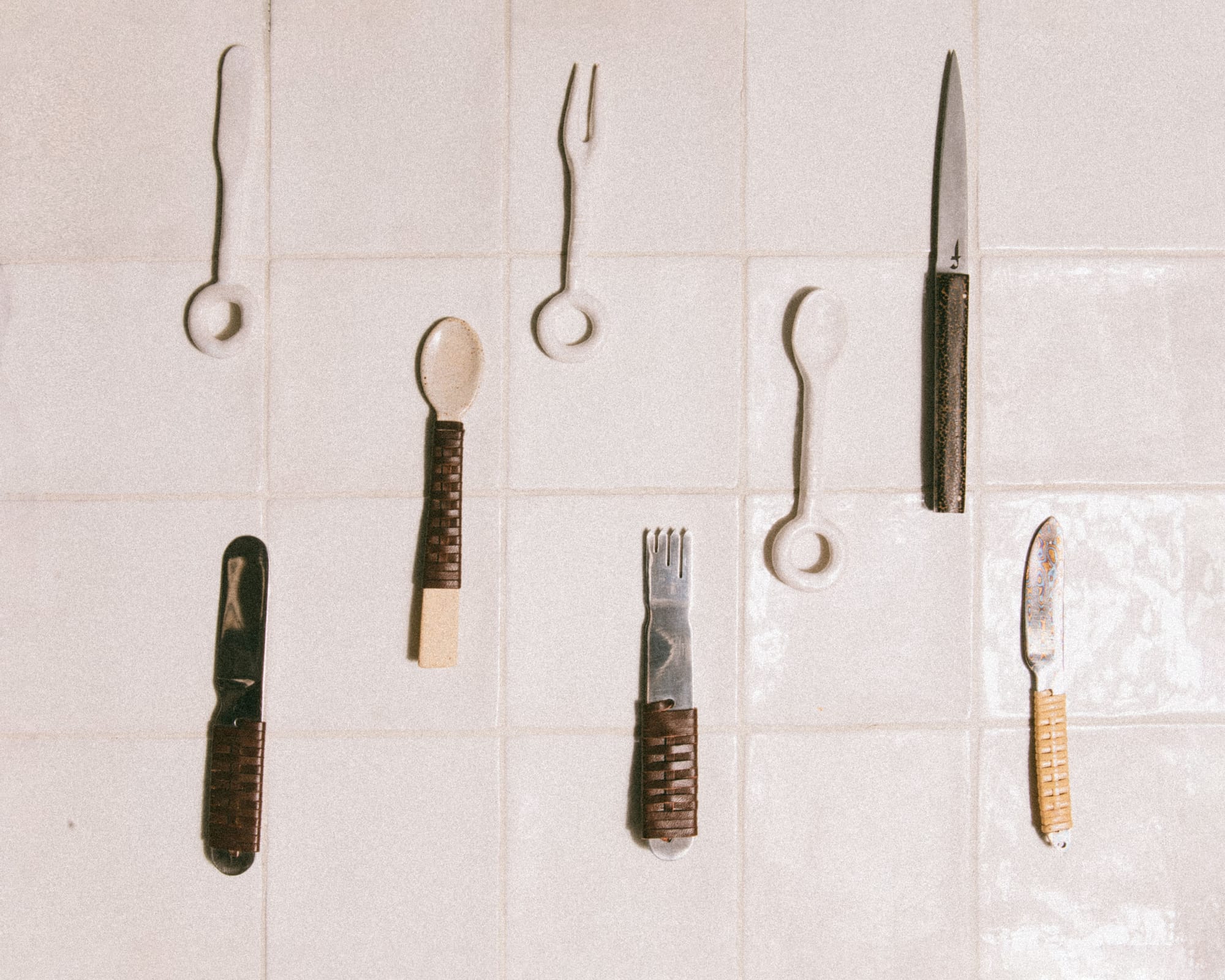
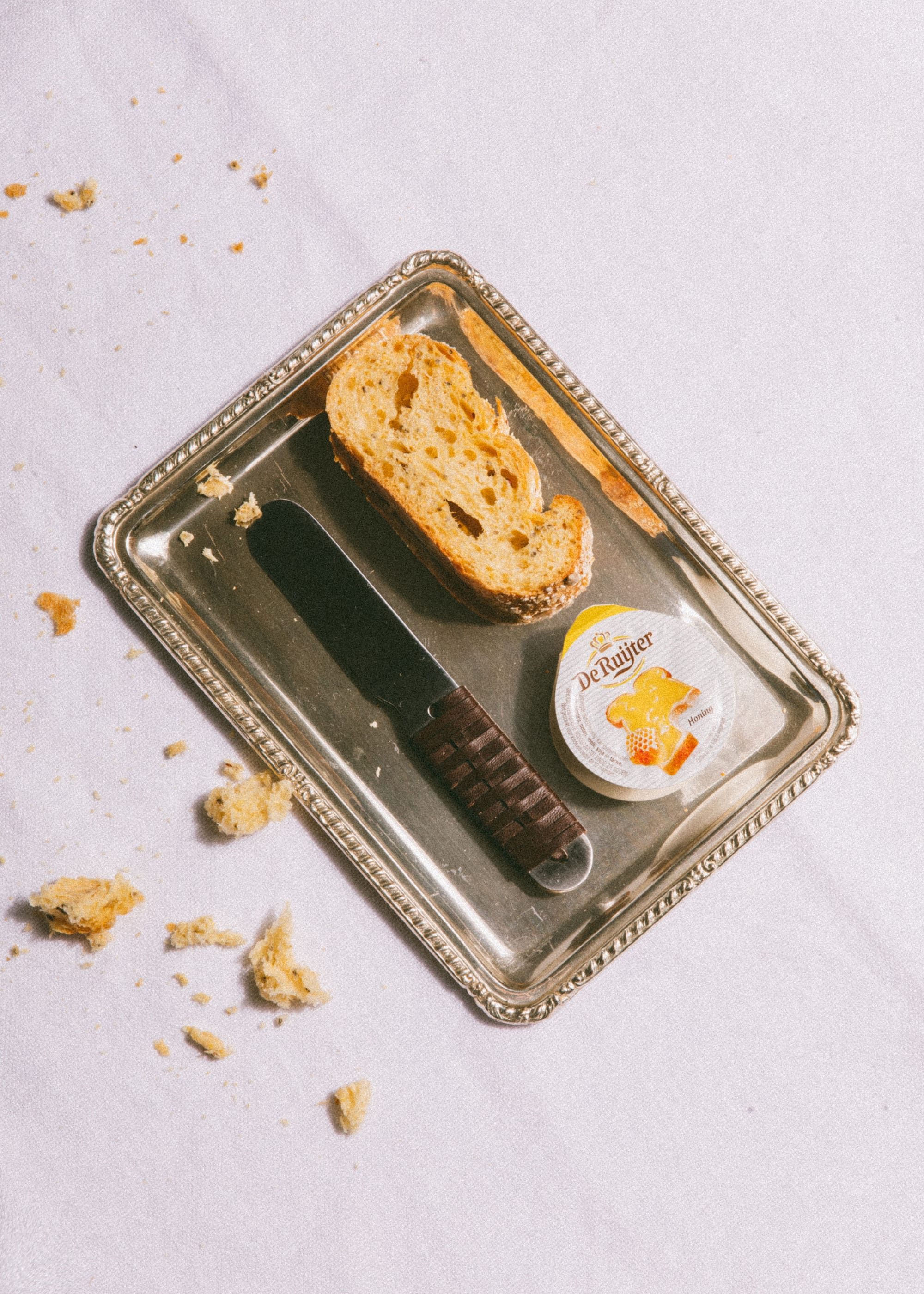
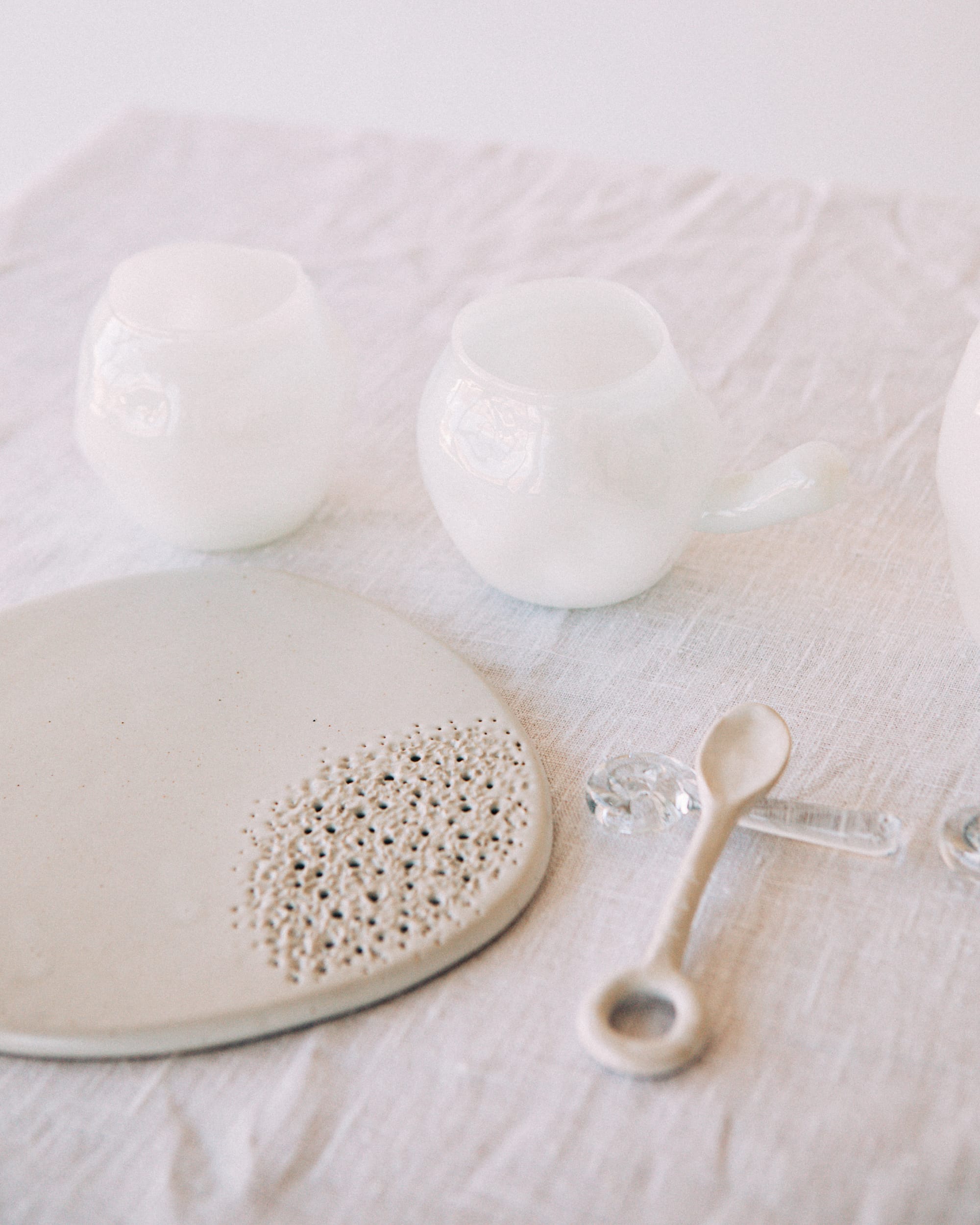
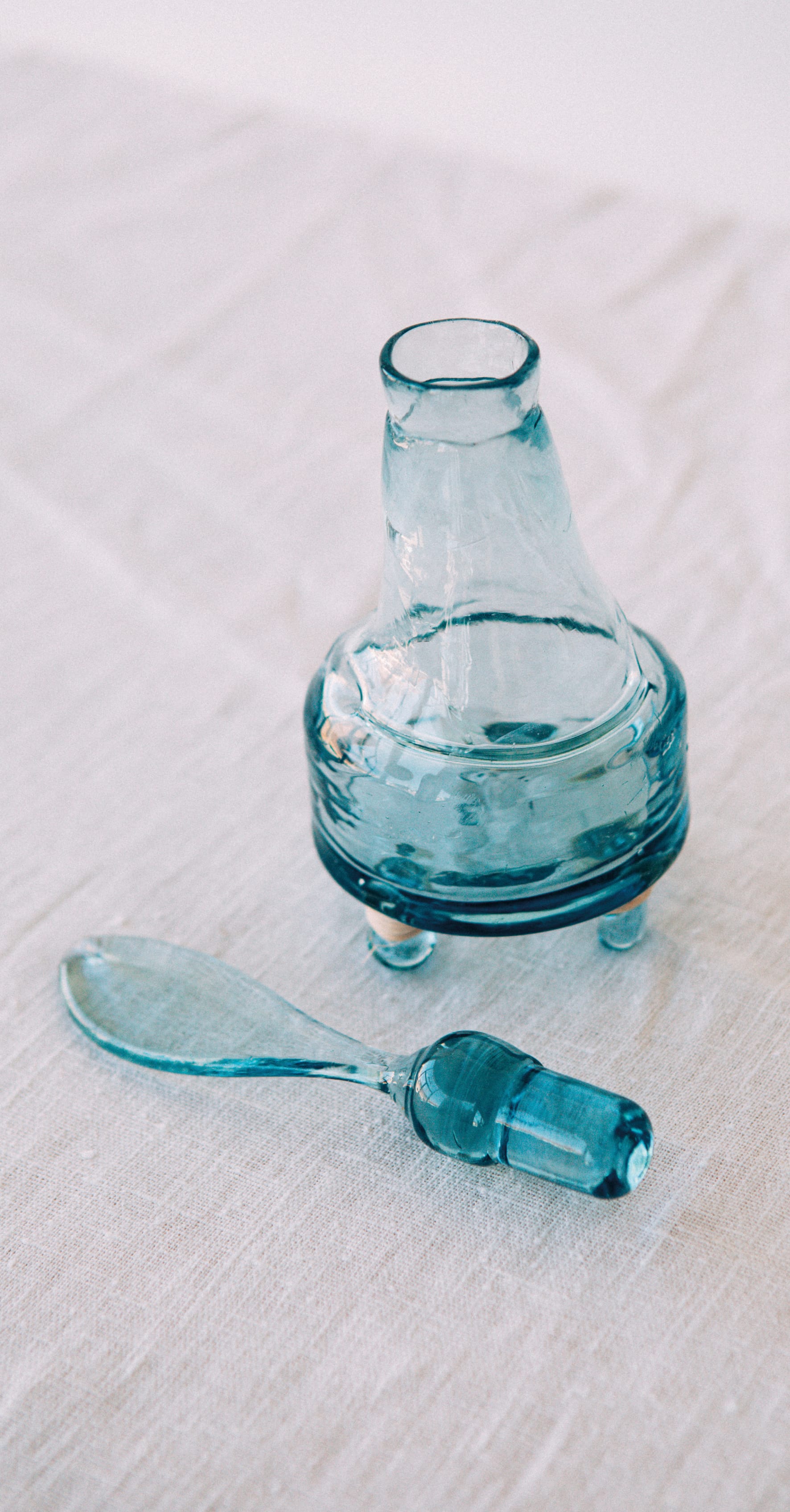
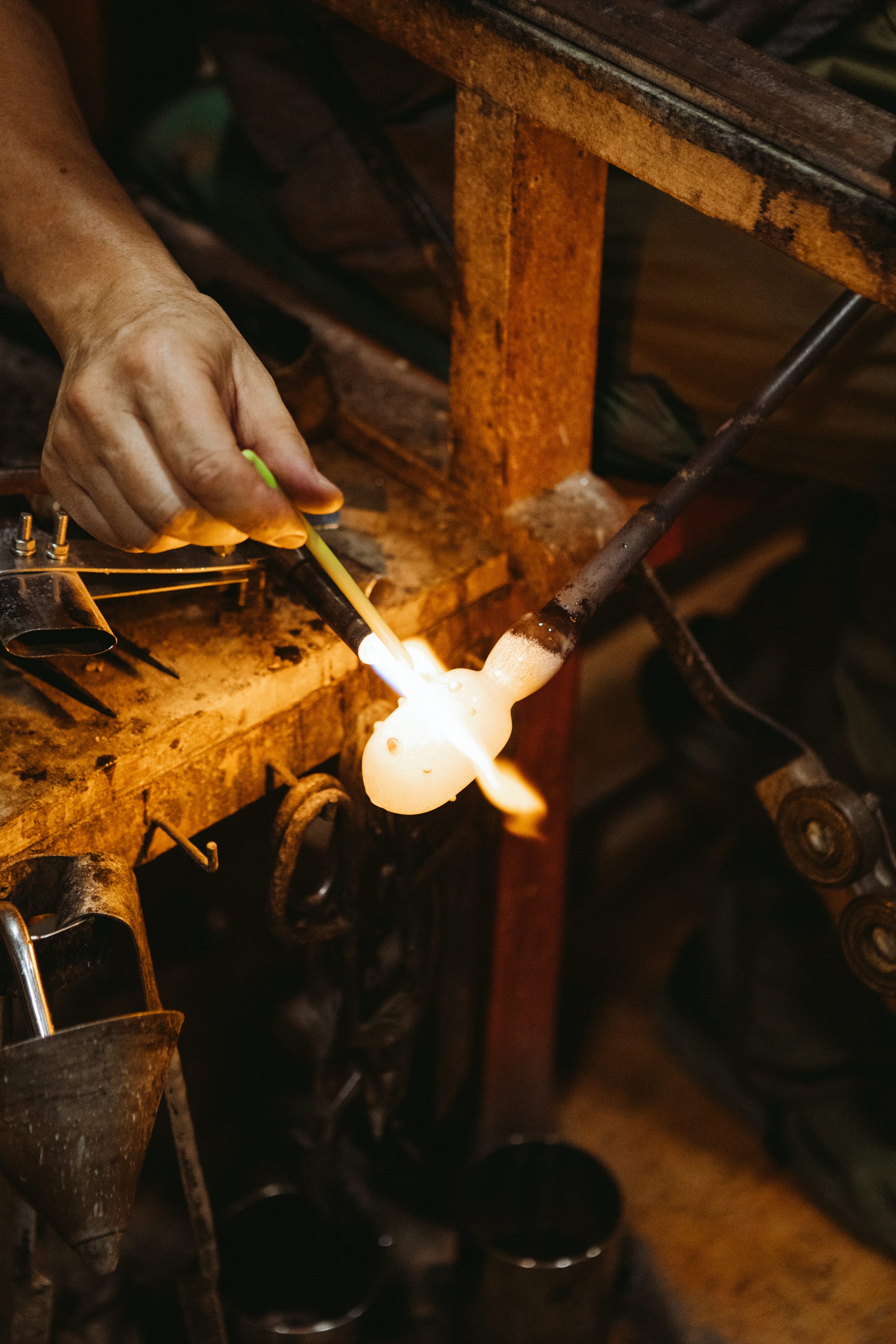
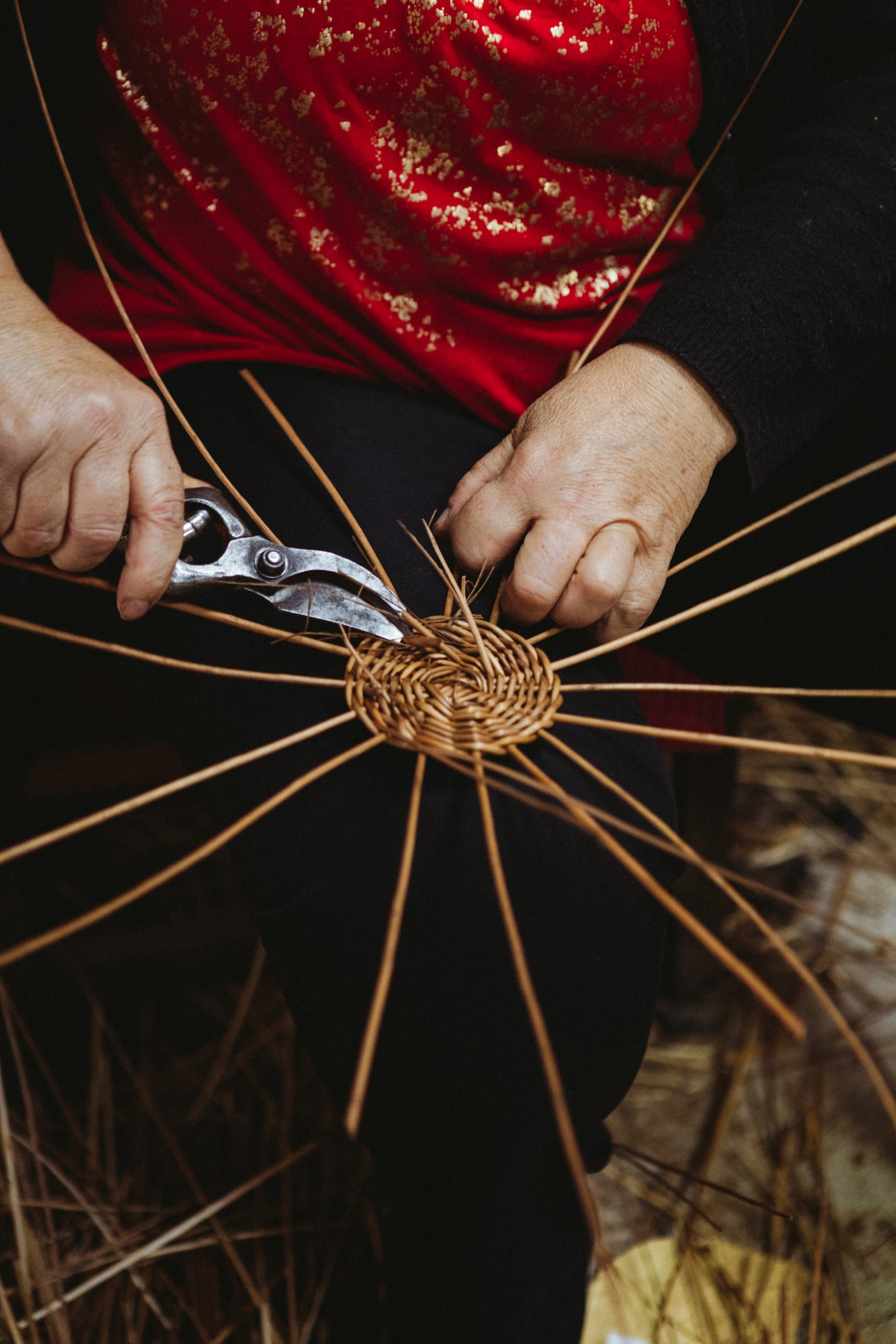
Photos courtesy of CHELEBI
Aida Mahmudova bridges traditional Azerbaijani craftsmanship with modern aesthetics creating objects that transcend time and trends. Her work is deeply rooted in materiality, offering both functional and collectable pieces, all designed to evoke a sense of history and narrative within contemporary spaces.
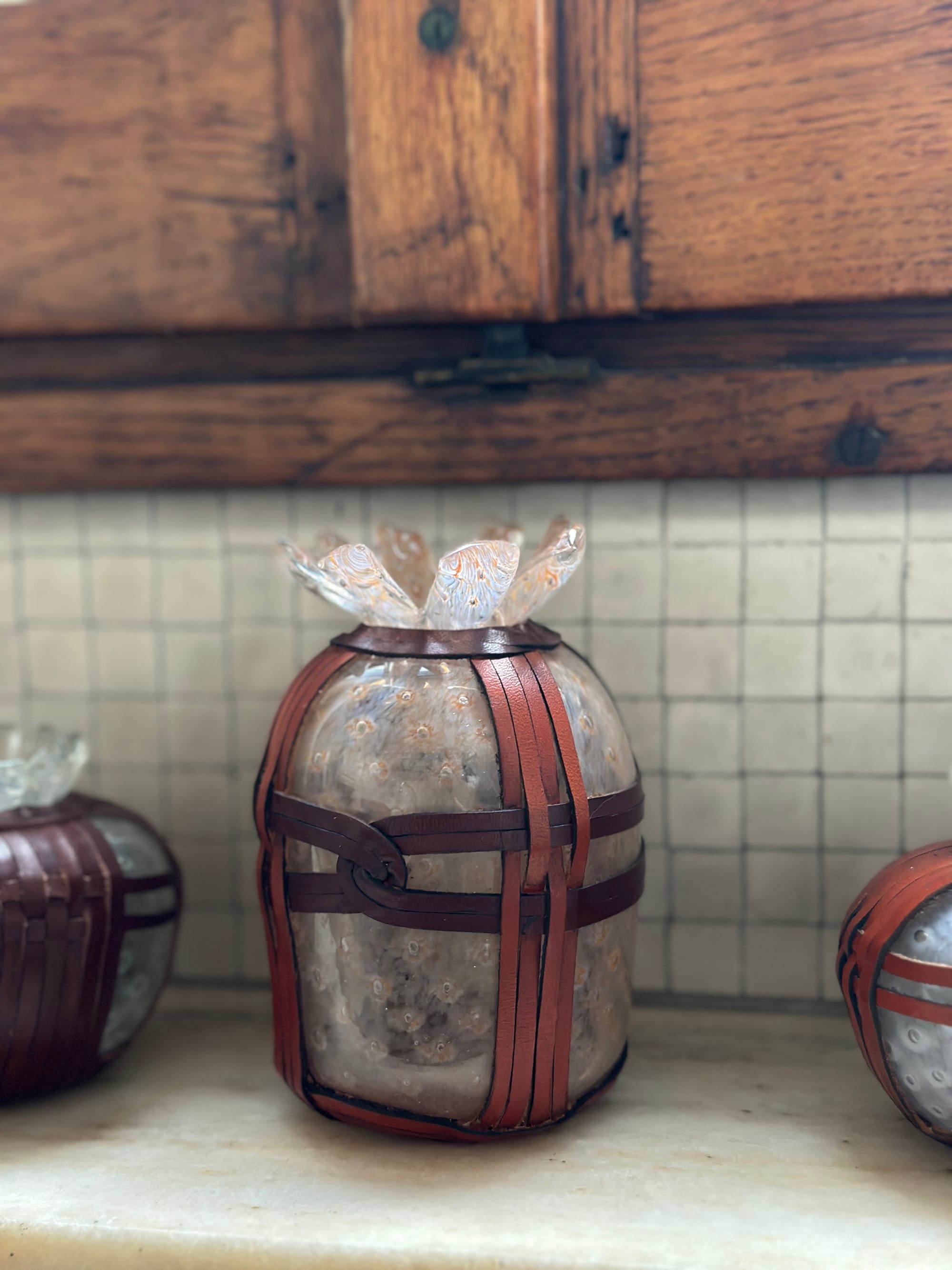
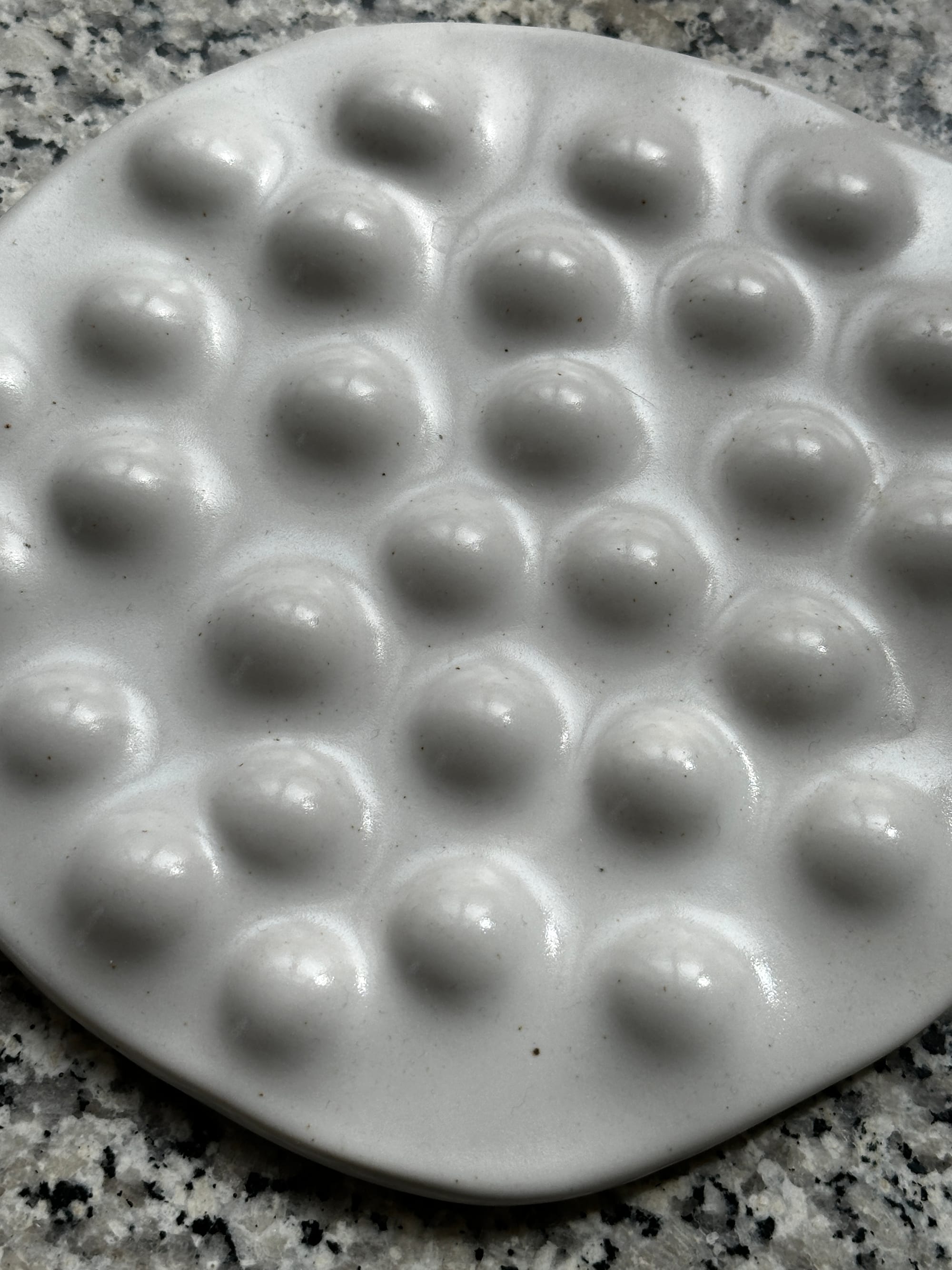
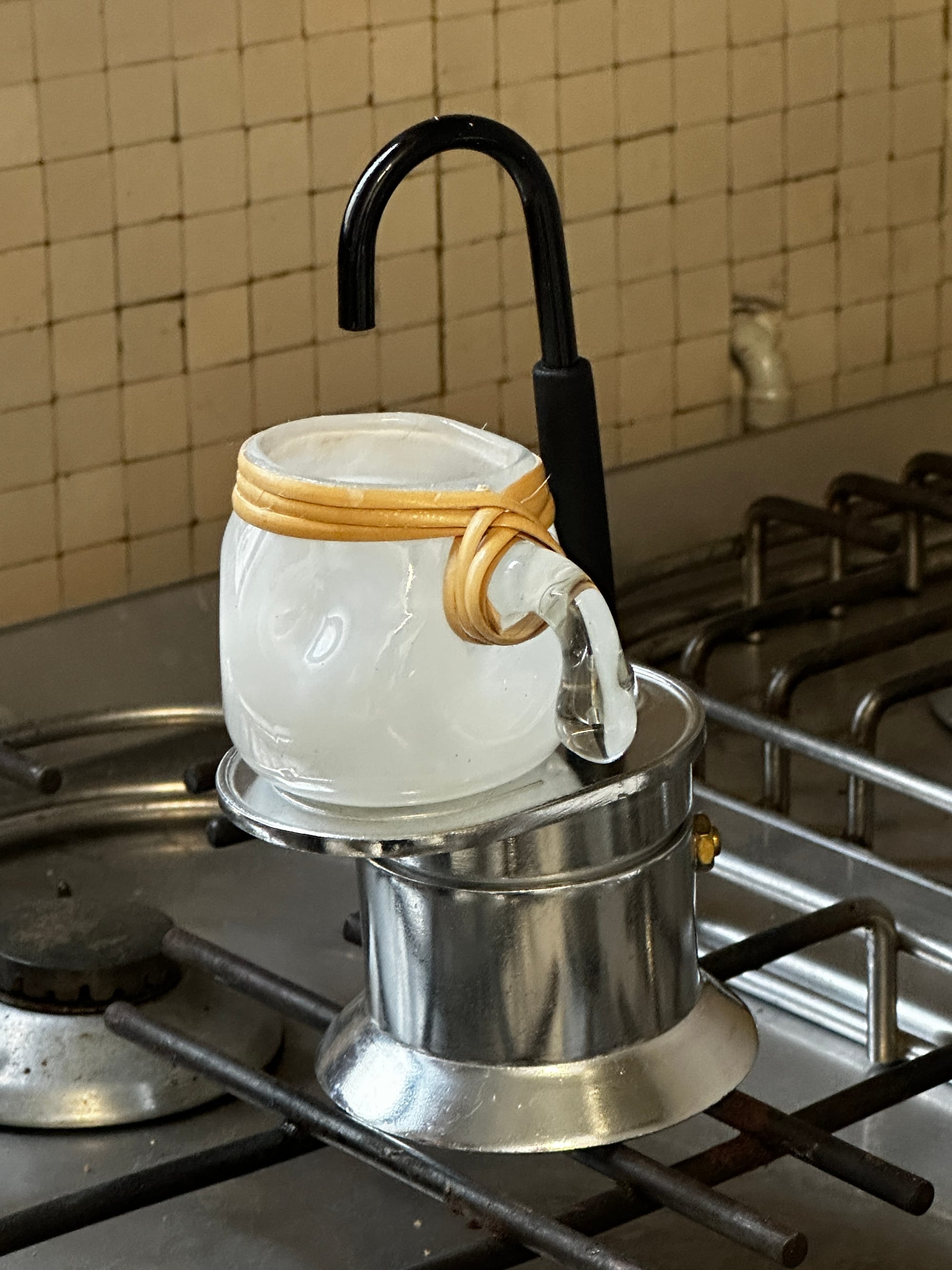

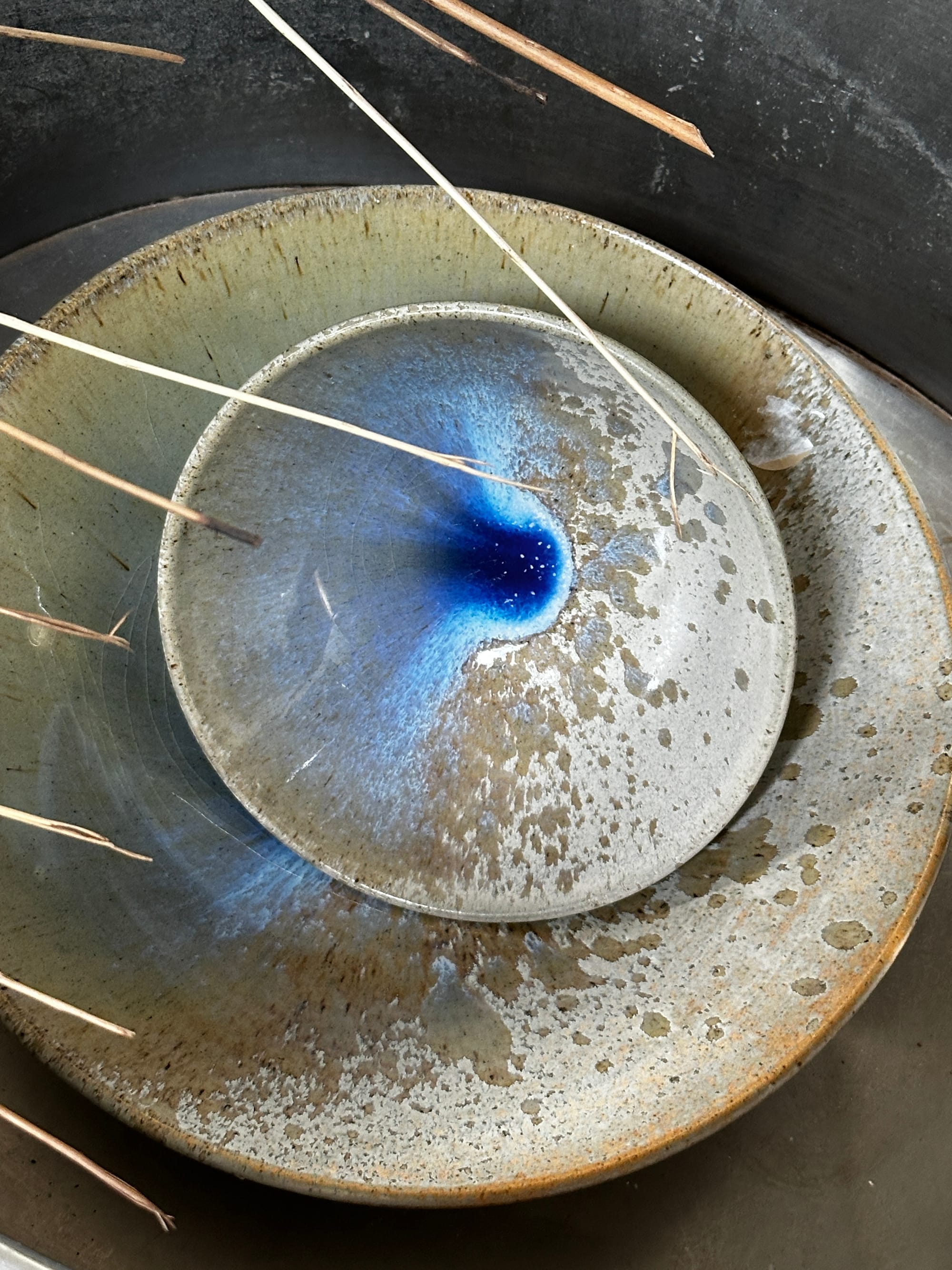
Photos by Fiona Coleman

